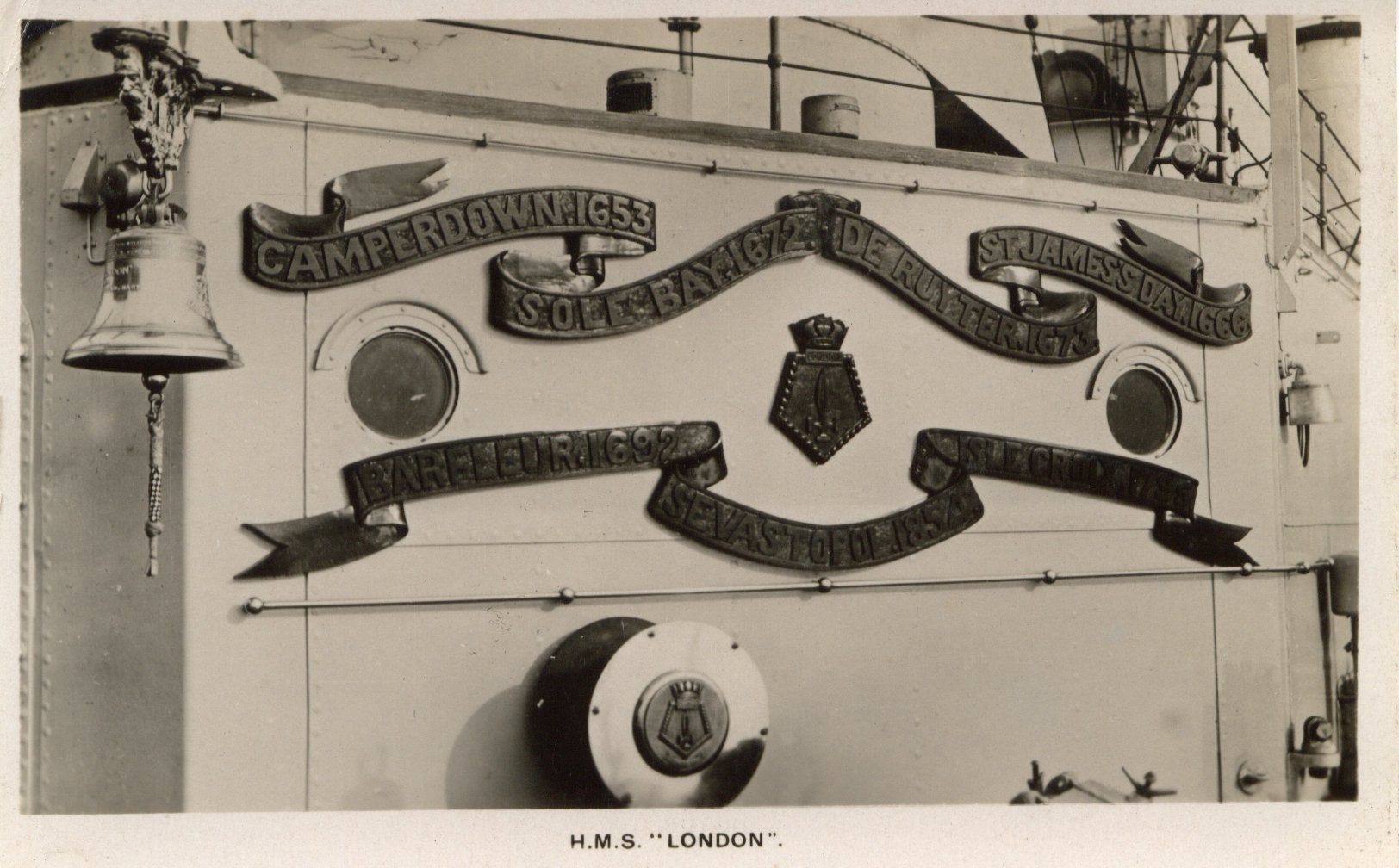
(and Malta 88 years later)

This album is a pictorial record of the first commission of HMS London, a County Class cruiser, won in a raffle at the end of the commission by Alfred James Morgan, Royal Marine, whose last seagoing commission this was.
This "London", the eighth of her name in the Royal Navy, was designed by Sir William J. Berry and authorised by the 1925-26 estimates. Building commenced on the 23rd February, 1926, and the ship was launched by Lady Ebbisham (then Lady Blades), the wife of the Lord Mayor of London, on the 14th September 1927; the ship was officially completed on 31st January 1929.
"London" was the name ship of her class of four cruisers, the others being "Sussex", "Shropshire" and "Devonshire". Her length overall was 633 feet (between perpendiculars, 595 feet), her beam was 66 feet and draught 17 feet; her "Standard" displacement was 10,000 tons. The armament consisted of eight 8-inch guns, mounted in twin turrets, four 4-inch anti-aircraft guns, four 3-pounder saluting guns, four 2-pounder pom-poms and eight torpedo tubes, arranged in quadruple mountings on the upper deck (these were the first ships to carry quadruple torpedo tube mountings). The machinery, built and installed by the Fairfield Shipbuilding and Engineering Company, was designed for 80,000 horse power - giving a speed of about 31 knots. "London's" peace complement, as Flagship of the First Cruiser Squadron, was 54 officers and 650 men. The initial cost of the ship was about two million pounds sterling and the cost of her annual upkeep ran to about two and a quarter hundred thousand pounds.
During the commission "London" was commanded by
The following officers flew their flags in "London" during her first commission.
The ship's motto was Domine Dirige Nos which translates as Lord Direct Us.
Dad joined the ship on 5th February 1929 at South Railway Jetty, Portsmouth. The ship commissioned at 0900 and apparently it was raining very hard. The hard work of getting a new ship clean and efficient enough to join the Fleet began, the details of which can be read in the diary, entitled Bow Bells, pages x-xiv. Taking a new ship over from dockyard control was always a difficult time. It would be incredibly dirty and the crew would be driven very hard to get it in a condition to satisfy the very exacting condition required by the Mediterranean Fleet. At the same time they would have to constantly test the machinery and armament, which entailed going to sea and returning to harbour often. This very often undid all the good work done by the cleaners the day before and caused increasing tension on board as time went by. The officers' careers and promotion prospects depended on the ship getting a good report, which meant that they often worked out their frustration on the ratings who worked for them. The men did not really understand why they were being given such a hard time and this could cause a lot of bad feeling. In addition to these normal tensions "London" was required to go to the city of London and, in the full glare of publicity, put on a show for the Lord Mayor of London and his wife, Lady Ebbisham, who had launched the ship, and no less a person than the Prime Minister, Stanley Baldwin. Under these conditions good man management by the Commander of the ship is required if the ship's company are to be kept happy. From what I remember of conversations with Dad this did not happen and the ship arrived in the Mediterranean with the morale of the crew very low. Because of the dictates of discipline, the only way they could register their feelings was to refuse to take part in any activities, such as sporting competitions. This would publicly show the fleet that all was not well and would reflect badly on the captain and officers of the ship. Apparently a change of Commander did the trick and morale improved tremendously. Dad spoke well of Commander Brind, who was known as Daddy Brind.
The album begins with the visit to London. The first page shows loyal pictures of Royalty and the sights of London.
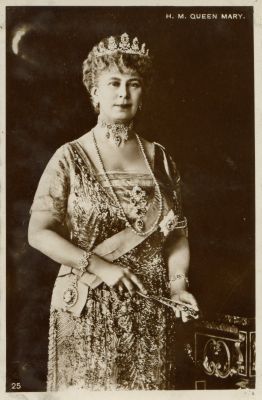
|

|
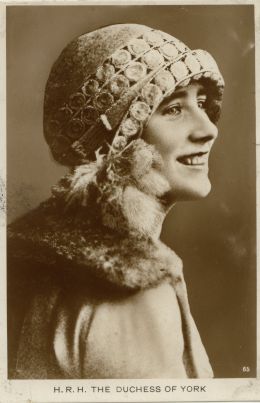
|
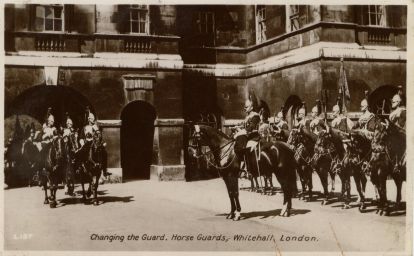
|
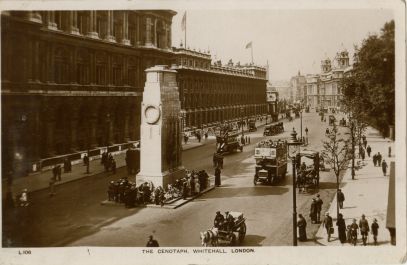
|
Shows HMS London moored in the middle of the river at Gravesend, dressed overall. There is also a picture of the Lord Mayor and Lady Mayoress of London, Lord and Lady Ebbisham, who visited the ship on 16th March 1929. The ship's company marched past and the visitors had tea on board, before leaving at about 6 o'clock. The Lord Mayor asked for the main brace to be spliced as he left, which made him very popular with the ship's company. The other picture of interest is that of Stanley Baldwin, the Prime Minister, who came on board for breakfast on 18th March, rather late apparently because the weather was foggy. When the fog lifted a party of 20 officers and 200 men left the ship and marched through the streets of London, through cheering crowds, to a party at the Guildhall. At this party, apparently, every member of the ship's company was presented with a souvenir cigarette case (see Bow Bells pages xiv-xv). I wonder if this was the case being shown to baby Alfred in the photograph taken on Southsea Common in 1932.
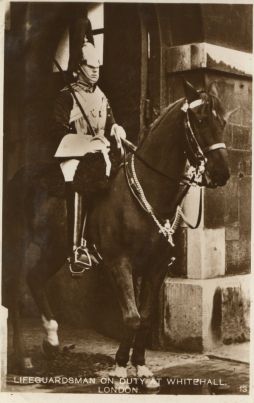
|
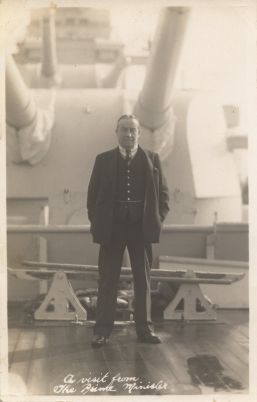
|
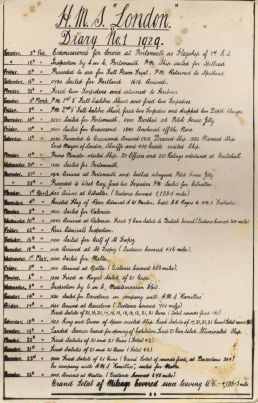
|
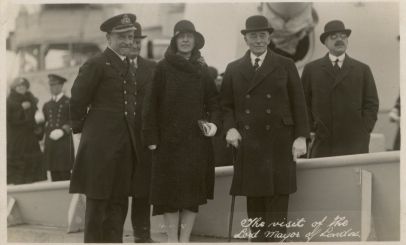
|
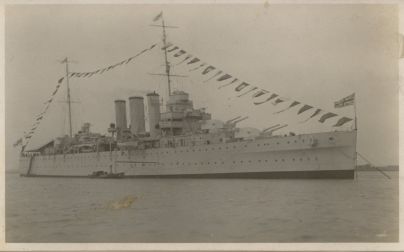
|
Shows "London" manning ship, possibly for the visit of the Lord Mayor. The next picture, of the Bow Bell, is interesting. It appears to be from the "London" of 1669, recast in 1735 and "Presented to HMS London by the Citizens of London Right Hon'ble Sir John Pound Mayor 1905". This must have been the previous "London", broken up in 1920. "London" sailed for Portsmouth on 20th March and arrived at Pitch House Jetty on 21st. The next two pictures show families waving goodbye from Pitch House Jetty, Portsmouth, 28th March 1929 as the ship sailed for torpedo practice at West Bay and then in the afternoon off to Gibraltar. Bow Bells pages x-xvii covers this period.
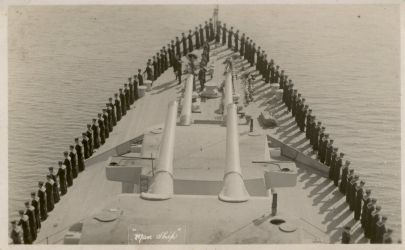
|
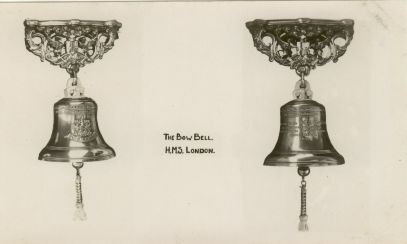
|
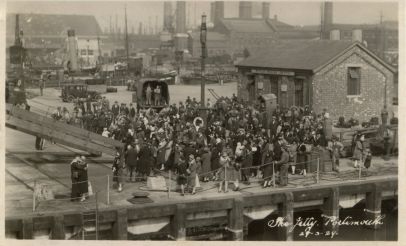
|
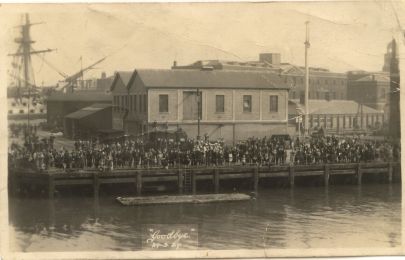
|
Shows the arrival at Gibraltar on 1st April 1929. The lower picture shows the "London" coming alongside the detached mole. This was not a popular billet because it was only possible to get ashore by boat, whereas the mole where the battleships can be seen was connected to the shore and it was possible to walk directly into town. The ships with the senior officers always got the best billets. The ship anchored outside the harbour appears to be HMS Furious. This was grandpa Herbert Lee's last ship, which was converted from a battlecruiser to one of our first aircraft carriers. This indicates that the harbour was full. The upper picture shows the ships from near the dry dock, on the way to the dockyard gate. The battleships seem to be three Queen Elizabeth class and one R Class, probably HMS Ramillies, as she is mentioned a little later in the diary. The two funnelled ship is a C class cruiser.
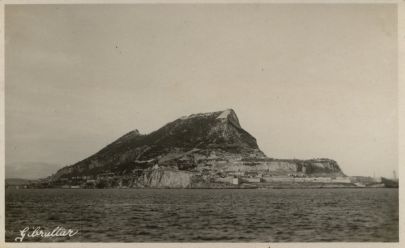
|
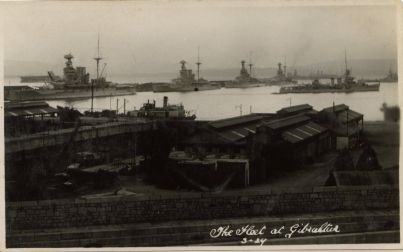
|
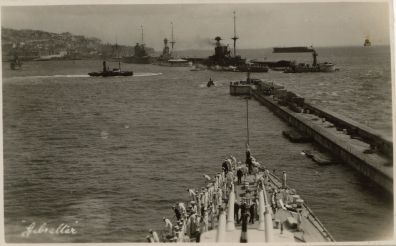
|
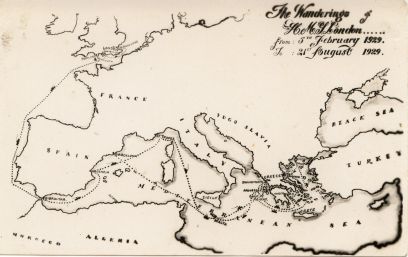
|
On 8th April "London" sailed for Valencia, arriving on the 10th. Two pictures are of Valencia. The bottom left is of the tompion of one of the guns. A tompion was a cylindrical piece of wood which fitted the gun barrel to keep the weather out when the gun was not in use, decorated with the ship's crest.
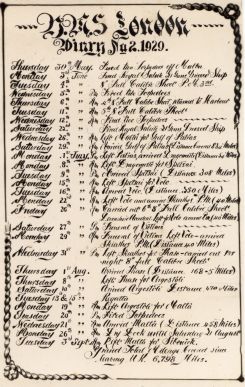
|
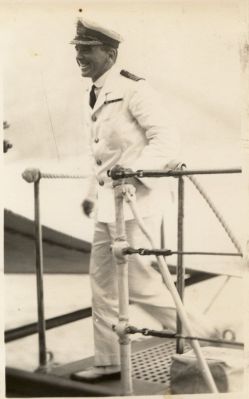
|
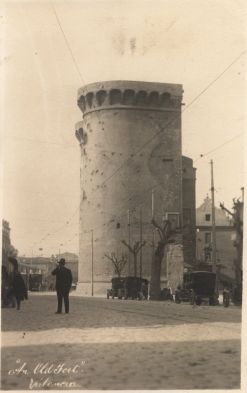
|
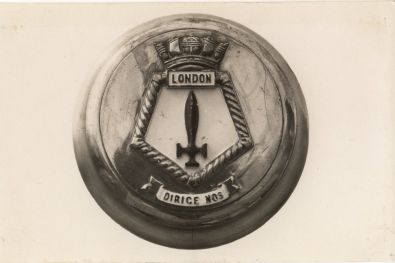
|
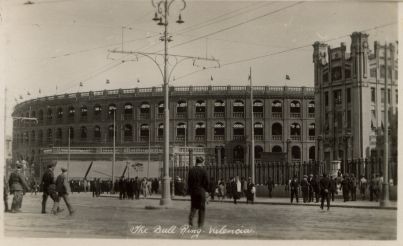
|
Has scenes from a bullfight in Valencia.
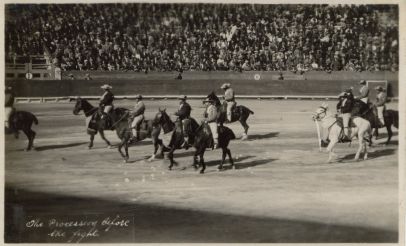
|
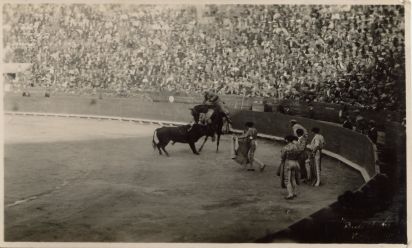
|
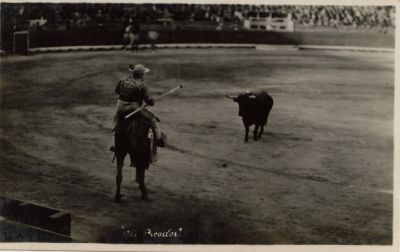
|
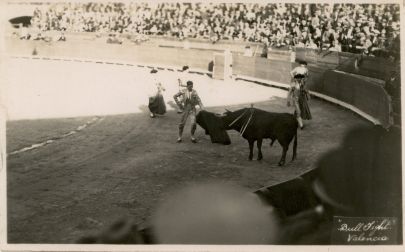
|
On 16th April "London" sailed for St Tropez, arriving on 18th. The top two photos are scenes from there. On 1st May she sailed for Malta, arriving 3rd May. The bottom left photo is passing the entrance to Grand Harbour and bottom right is a view of the fleet inside Grand Harbour. This photo is interesting, because astern of the R class battleship with the cowl on the funnel can be seen a Queen Elizabeth class battleship in the floating dock, which was required in Malta because there was no dock big enough to take the battleships. Also, astern of "London" can be seen what appears to be HMS Adventure, a mine laying cruiser.
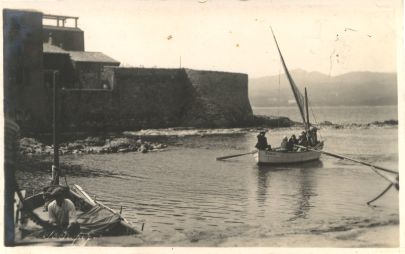
|
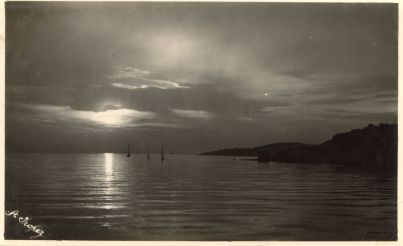
|
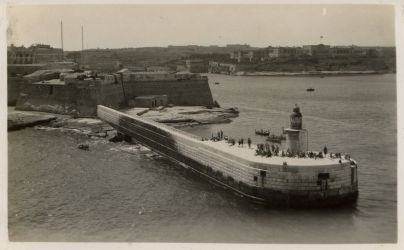
|
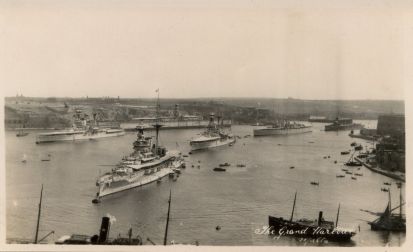
|
|
The top left photo is of Fort St Angelo, taken from Valletta, with the town of Birgu in the rear. They form a peninsula jutting out into Grand Harbour. The top right photo of French Creek shows some of the town of Senglea, also on a peninsula. Between the two peninsulas lies what is known as Dockyard Creek. This was where the great siege took place in 1565. The Knights of Malta fortified the necks of land at the end of these peninsulas, with Fort St Angelo as the strong point. A chain was fitted across the entrance and a bridge of boats from Birgu to Senglea enabled the Knights to reinforce whichever side was in most need. At that time Valletta had not been built, only Fort St Elmo, which protected Grand Harbour entrance. The diagram, right, shows the situation at that time. The Turks tried for three months to capture the place and when they retreated it was in ruins. La Valette, the Grand Master of the Order, realised that the place could not stand another siege, so he immediately started to build the town named after him, the present day Valletta, on the Mount Sciberras of the diagram. At a later date it was deemed necessary to strengthen the fortifications and more were built at Floriana, outside the original walls.; Floriana can be seen in the bottom left photo and in the space between the two can be seen the circular shapes of the granaries, which were certainly in use up to the second world war. |
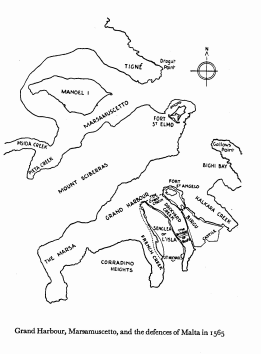
|
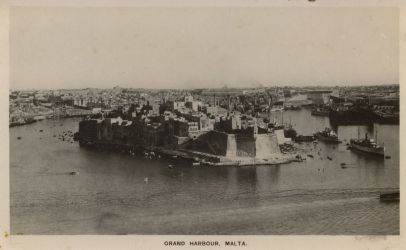
|
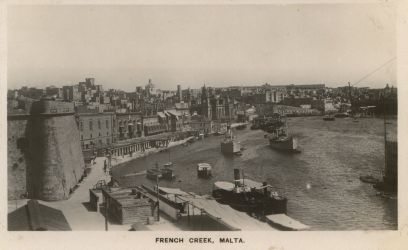
|
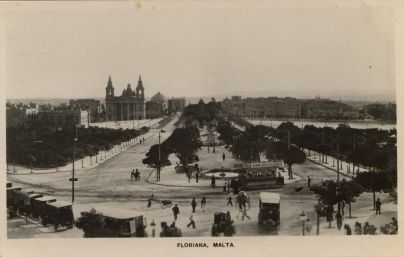

|
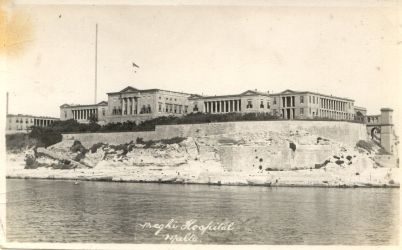

|
On 14th May 1929, "London", in company with "Ramilles", sailed for Barcelona, to represent Britain at the World Fair. This Fair seems to have been designed as a showcase for the government of the dictator, Primo de Riviera, and to show the world that Spain was not a backward country. The opening ceremony must have been attended by royalty from all over Europe because the diary records firing 387 rounds in salutes during "London's" stay. "London" arrived on 17th May. The page shows views of Barcelona. The bottom left picture shows "London" tied up stern to and dressed overall. The next ship appears to be a French cruiser, "Lamotte-Piquet".
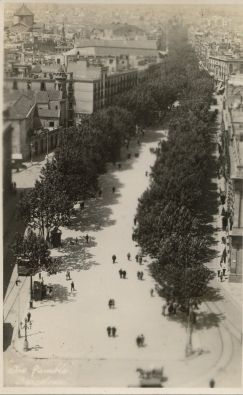
|
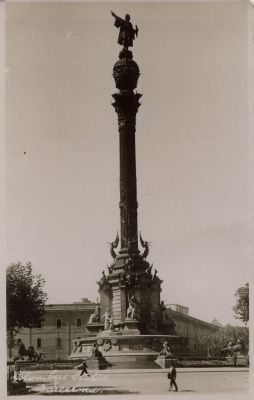
|
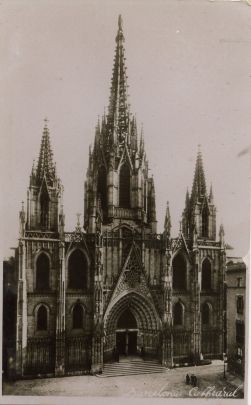
|
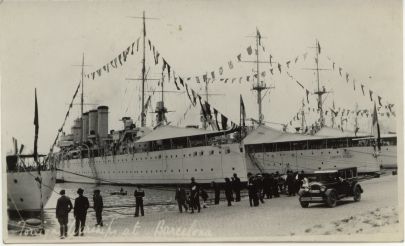
|
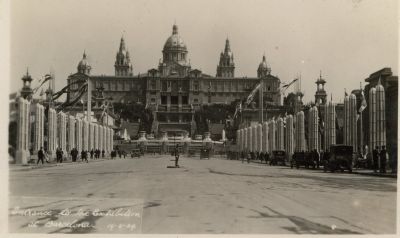
|
On 18th May 1929 the King and Queen of Spain visited the ship, at 1620 hrs. The top left photo shows the Master at Arms leading the First Lieutenant and behind them the Captain walking alongside King Alfonso, Alfonso on the right. They are all wearing the old fashioned dress uniforms. Note that the Master at Arms, although not an officer, carries a sword. The top right photo shows Queen Ena of Spain, a granddaughter of Queen Victoria. The bottom left photo shows Primo de Riviera, the dictator of Spain at that time and the last photo shows Prince Udine of Italy.
These are interesting photos because the lives of three of these people were about to change irrevocably. Primo de Riviera, with the King's enthusiastic support, had taken over as a dictator in 1923. He stepped down in January 1930 and died a few months later. His rule had not been popular. A new government, formed in 1931, ousted Alfonso, who died in Rome in 1941. He was not helped by having once introduced Primo de Riviera as "my Mussolini". Queen Ena left Spain with the king and soon afterwards they separated. She did not have the happiest of lives. She was given the title of Her Serene Highness by Edward VII because this was the lowest title Spain would accept for their Queen. A bomb was thrown at her carriage during the wedding procession in 1906, which spattered her with the blood of one of her guards. Being descended from Queen Victoria she carried haemophilia. Two of her four surviving sons inherited this, one was a deaf mute, from a botched birth and the other son became the father of Juan Carlos, the present king of Spain. She also had two daughters. Alfonso fathered three other children outside marriage and had an affair with Ena's cousin, so the separation is perhaps understandable. She lived to be 83.
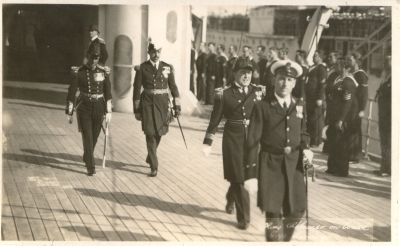
|
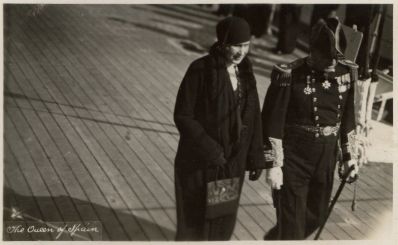
|
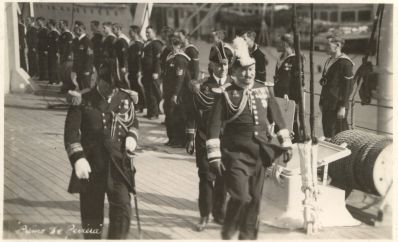
|
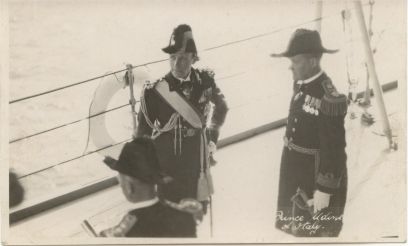
|
Shows scenes of Barcelona taken during the visit.
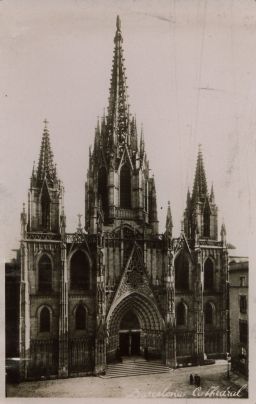
|
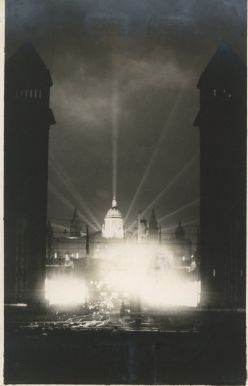
|
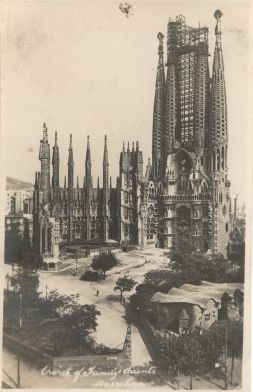
|
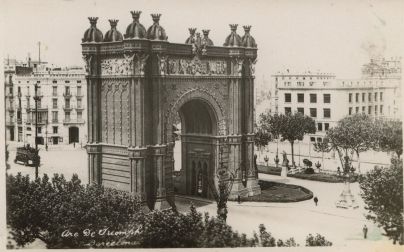
|
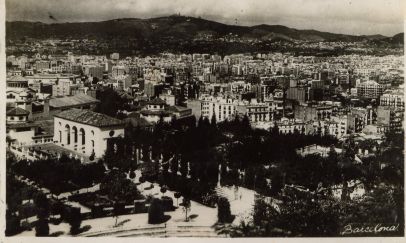
|
Shows the ships lit up on Sunday 19th May 1929 to celebrate the opening of the exhibition. A seaman guard was landed and a 21 gun salute was fired. Lighting the ship up like this with strings of ordinary light bulbs was fraught with difficulty, especially near the waterline. The last picture shows the saluting guns being fired.
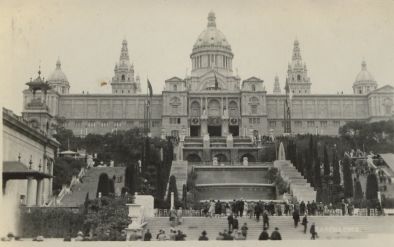
|
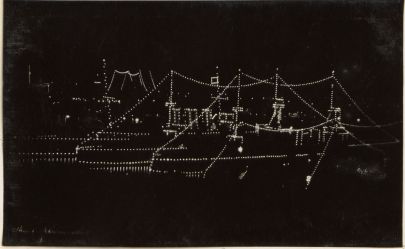
|
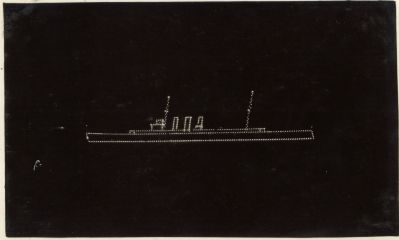
|
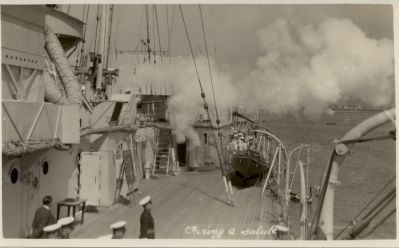
|
Shows pictures of Malta, possibly taken between the end of May and June 26th, when the ship left Malta on the summer cruise.
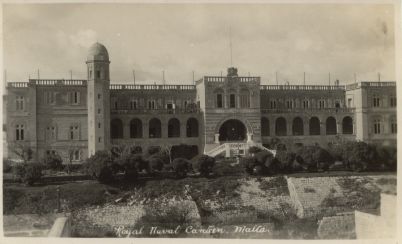
|
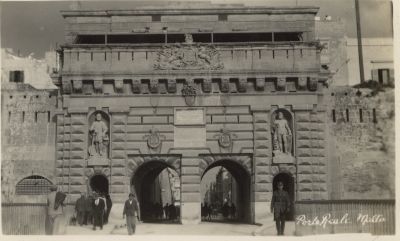

|
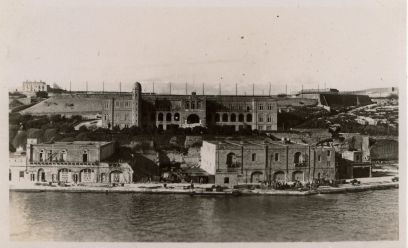
|
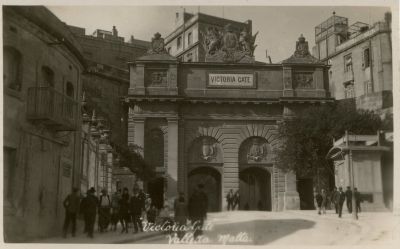

|
More pictures of Malta, plus HMS London's chapel. St John's cathedral has a very interesting history, and Mosta church at that time had one of the largest unsupported domes in the world. No one then would have imagined the "Miracle of Mosta" in 1941, when a 1000 lb bomb came through the roof but failed to explode.
The Chapel of Bones was situated beneath the Della Nabia Chapel on Valletta's English Curtain, between the Sacra Infermeria and the semicircular University Anatomical Laboratory. The adjacent multiarched buiding was the Valletta Primary School, built in 1904 on the site of the Magdalen Asylum for women. Because of their proximity to Fort St Elmo, all these buildings suffered heavily from Axis bombing in World War II. Until visiting was suppressed by the Archbishop in 1920 the chapel was one of Valletta's tourist spots and figured in guide books and on postcards. Although the war completed what the Archbishop began, it is still possible to view the ruins of the Nebbia Chapel near the Sacra Infermia.
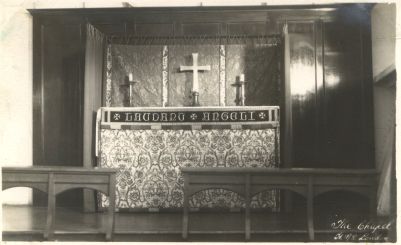
|
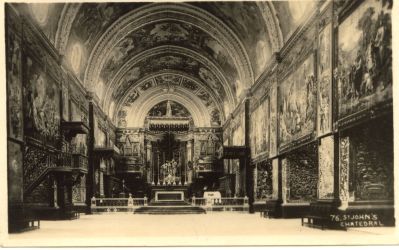

|
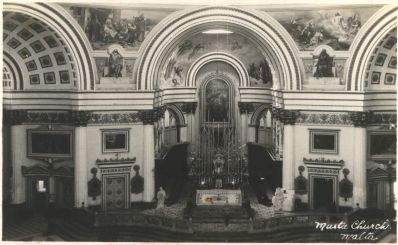
|
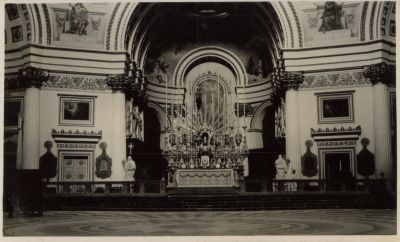
|
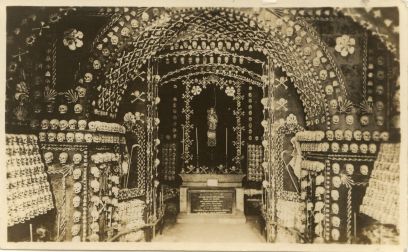
The Chapel of Bones
Strada Reale - VallettaWe remind our readers that the Chapel of Bones will be open to the Public today and tomorrow from 6.30 a.m. to 11 a.m. and from 1 p.m. to 6 p.m. Ladies will be admitted till 4 p.m.
The public in general, but especially visitors to the island should not fail to take advantage of this opportunity to pay a visit to this celebrated and striking chapel.
The chapel is entered from the church "della Nabia", called after Commander Nebbia, at whose expense the church was erected in 1619, during the Grandmastership of Adolphe de Wignacourt. The interior of the chapel, to which on ordinary days admittance is only obtained by permit from the Public Works Department, is a singularly ghastly but ingenious piece of work, which was executed by a chaplain of the Hospital in 1852, with the bleached bones of those who were buried in the ground attached to the Hospital. There are also three skulls pierced by bullets - those of the rebel ringleaders shot by the French on St George's Square.
Whilst on the subject, we wish to point out how much more convenient it would be for all, and especially for visitors, if the permits generally required to gain admittance into the Chapel of Bones were obtainable on the spot instead of at the Public Works Department. Foreigners are not expected to know where to apply for these permits and they experience no small inconvenience to be able to visit the chapel. We hope our remarks and suggestions will be taken into consideration by the authorities concerned.
(Extract from the 1906 Daily Malta Chronicle giving chapel opening times for November and a history of the chapel.)
More views of Malta as it was before the second World War.
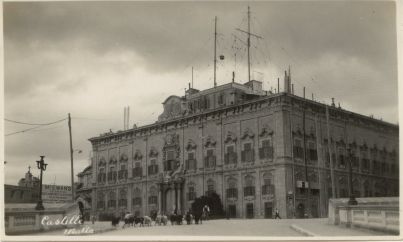

|
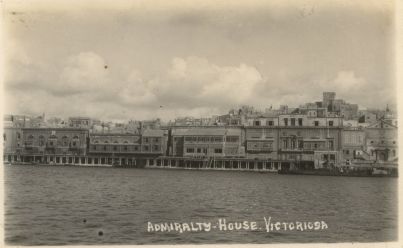

|
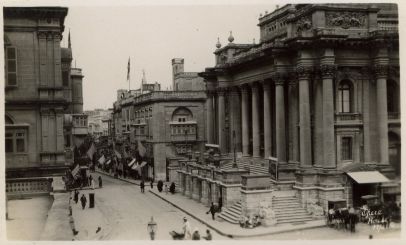

|
And Page 17 show HMS London and the squadron being worked up into the state of efficiency required by the C in C Mediterranean Fleet, which was considered the most efficient part of the Royal Navy. The diary for June 1929 shows a considerable number of full calibre shoots being carried out, as well as torpedo firings. The photos on these pages almost certainly are from this time because it is only natural to photograph everything when it is new and exciting. Apparently firing torpedoes from such a high deck caused problems when they hit the water.
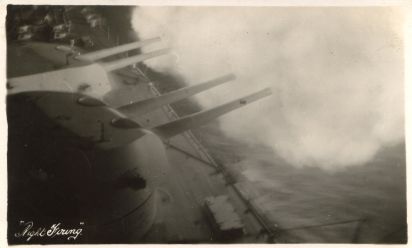
|
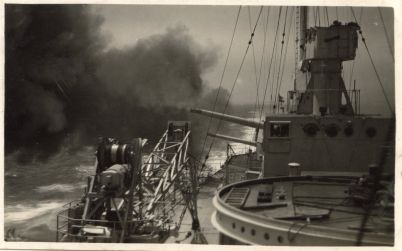
|
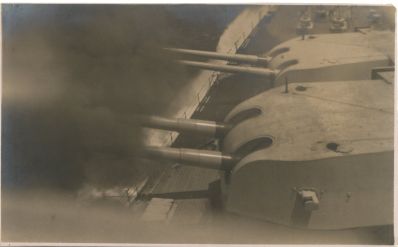
|
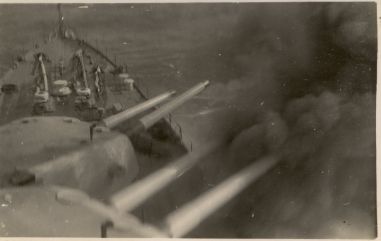
|
See description for Page 16.
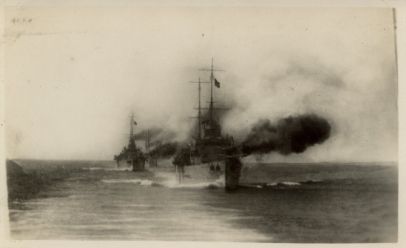
|
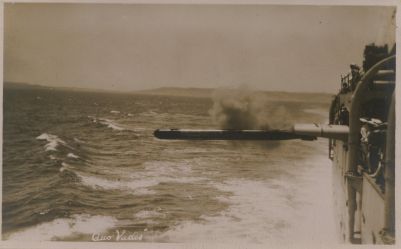
|
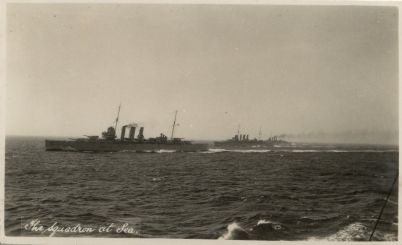
|
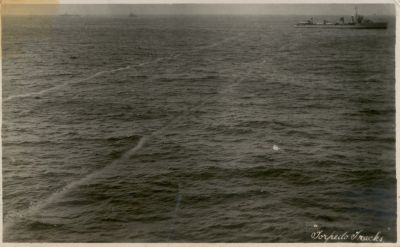
|
Shows pictures of some of the visits made during the fleet's summer cruise of 1929. HMS London left Malta with the fleet for the Gulf of Patros on 26th June. The ship actually visited more places than are shown here, all of them in Greece. The first was Dragomesti, the next Spetzia. The first three pictures here are of Spetzia. The next visit was Volo.
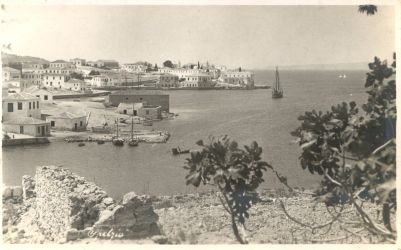
|
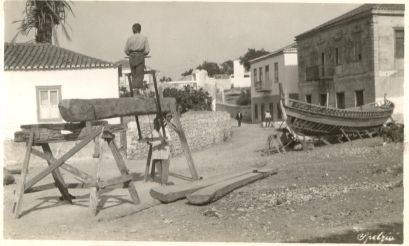
|
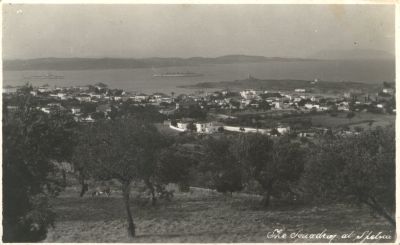
|
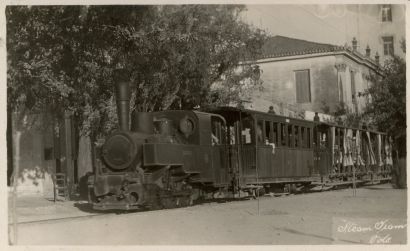
|
The top two pictures are of Volo, which turned out to be a place of tragedy for one ship of the squadron, HMS Devonshire. The summer cruise was not just a holiday for the fleet. In between visits the ships carried out all the usual exercises, so as to be ready for war at any time. On the 26th July the squadron carried out a full calibre shoot. When it was Devonshire's turn, the left gun of X turret, manned by Royal Marines, suffered what is known as a "hang fire", which meant that the cordite charge only partly ignited sending the shell only a couple of feet up the barrel of the gun. Before they could be stopped, the gun's crew opened the breech for the next round. The rush of air caused the remainder of the charge to ignite, causing a flashback into the turret which ignited the waiting charges. The resulting explosion blew the roof off of the turret into the sea and resulted in the death of 17 men.
|
Because of a lack of refrigeration at that time the bodies had to be buried as quickly as possible. The British Vice Consul purchased a plot of land on the edge of a cemetery at Volo, because the Greeks normally dug up the bones after a couple of years, and the bodies were buried there. This came into the news again in 2003, when the Greek authorities sold the plot for development into a park and demanded £50,000 for interment costs to reinter the remains or have them thrown away. The story was run in all the West Country papers, HMS Devonshire being a Plymouth ship and it turned out that a 92 year old man in a nursing home here was a survivor of the accident. |
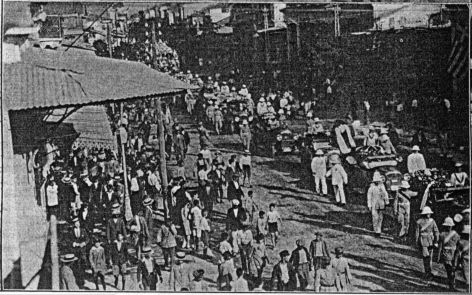
|
|
HMS Devonshire Funeral Cortege, Volo, 1929 |
The remaining two pictures are of Thaso, which was visited from 1st to 8th August, after carrying out a full calibre shoot.
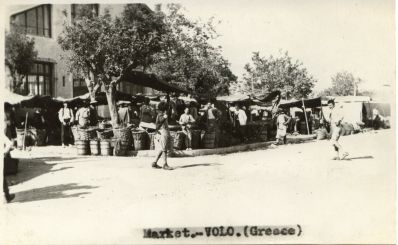
|
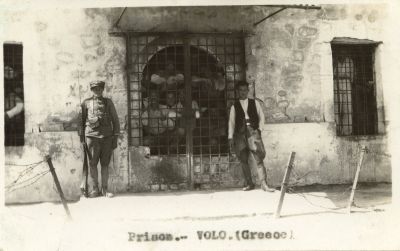
|
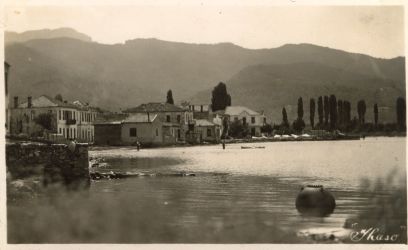
|
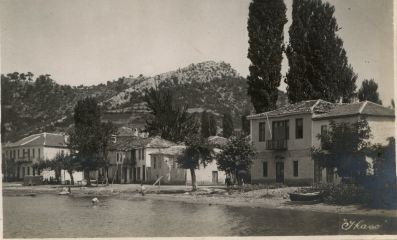
|
Shows views of Skiathos, which HMS London visited after the funerals on 27th and 29th July. In the bottom right picture can be seen two County Class cruisers, the aircraft carrier HMS Eagle, and a destroyer.
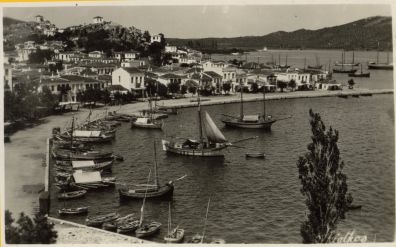
|
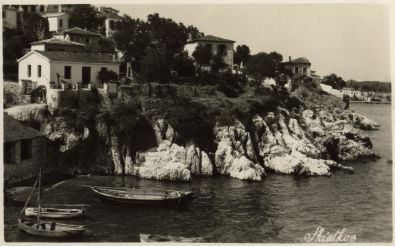
|
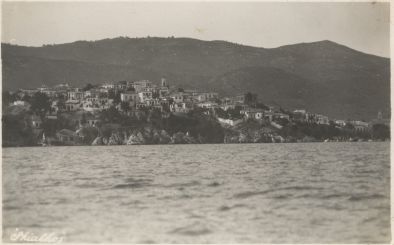
|
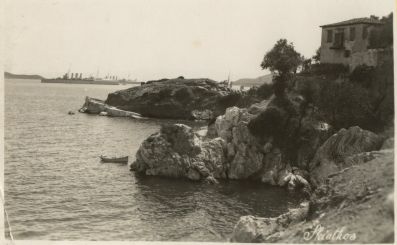
|
A mixture. The top left is out of place, being taken at Spetzia, which should have been on page 18. The next is from Argostoli, where "London" arrived on 10th August 1929. The third on the right is from Sebenico, which was not visited until the second part of the summer cruise in September 1929. The bottom left is a monument at Argostoli commemorating the British occupation of the Greek islands in 1818. The bottom right shows the fleet at Argostoli without enough detail to identify the ships.
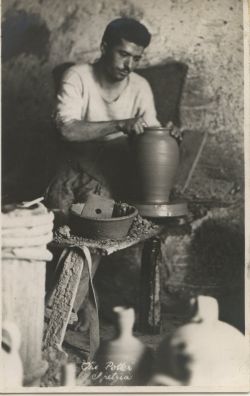
|
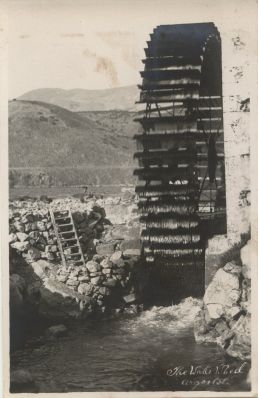
|
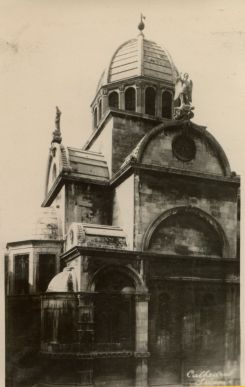
|
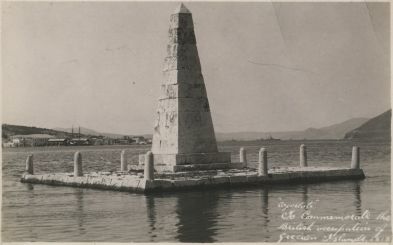
|
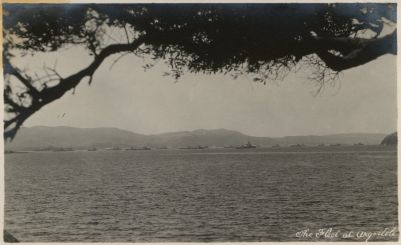
|
Shows pictures of the fleet regatta at Argostoli. The exception is the top left picture, which is obviously out of place, being of the regatta of 1930.
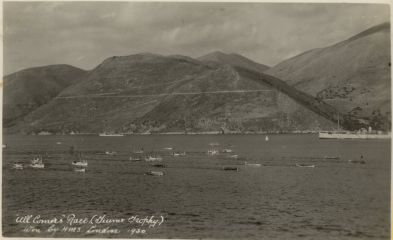
|
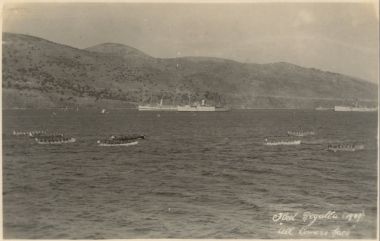
|
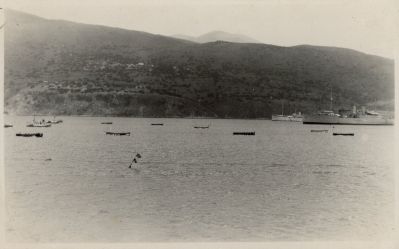
|
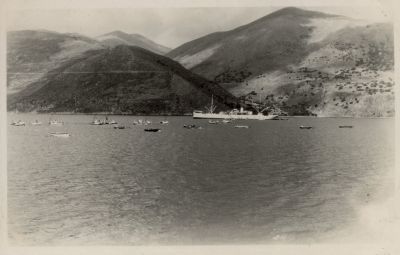
|
The top left picture is taken during the regatta at Argostoli. The top right is the water polo final, which took place in Malta after the Fleet's return. The date does not quite tie up with Bow Bells page 97, which resumes again on August 22nd 1929. The bottom right is interesting in showing even the men were fully covered in their bathing suits. "London" returned to Malta from Argostoli on August 21st, went into dry dock on August 26th and came out again on August 29th. She sailed with the fleet for the 2nd part of the summer cruise on 3rd September.
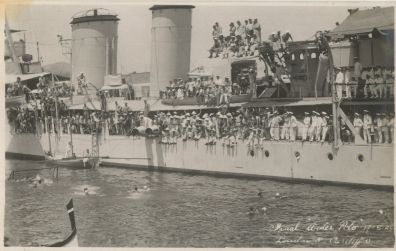
|
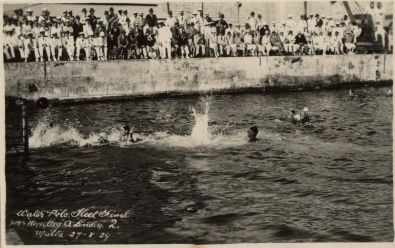
|
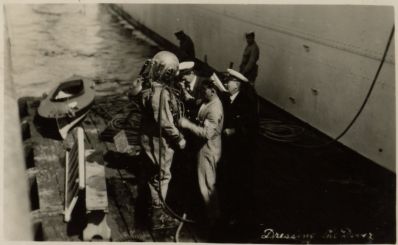
|
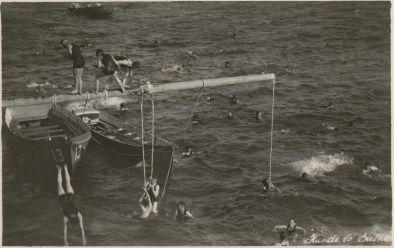
|
The four photos on this page were taken on the visit to Sebenico, in Yugoslavia (spelt Sebenick on the photos). See the description in Bow Bells pages 98-99.
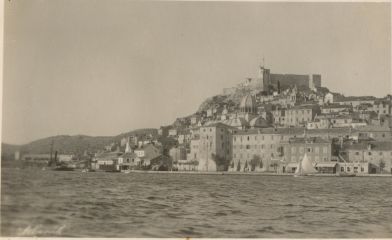
|
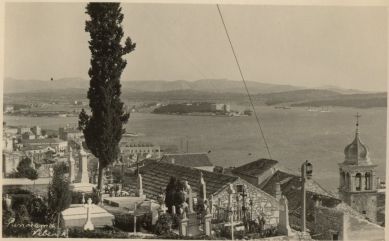
|
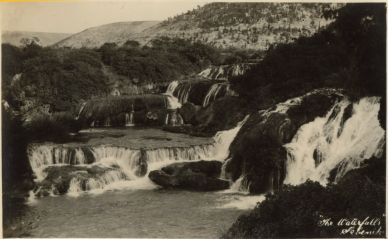
|
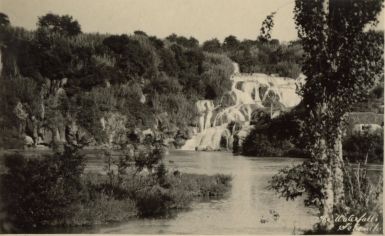
|
The four photos on this page were taken at Zara, in Yugoslavia, where "London" stayed from the 16th to the 27th September 1929. See the description in Bow Bells pages 100-101.
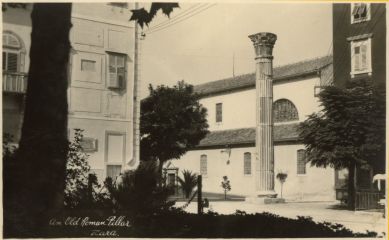
|
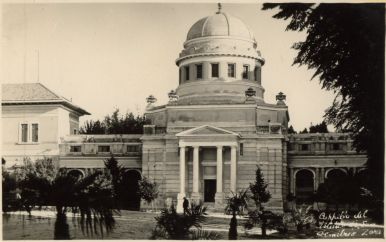
|
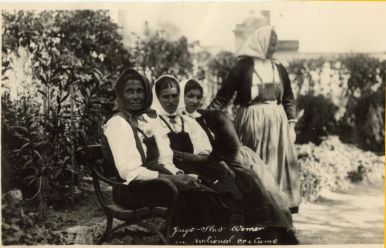
|
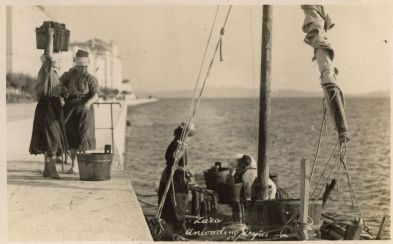
|
The top two photos were taken at Zara, the bottom two at Pola, taken when the ship was at Brioni, where she arrived pm on 27th September. The Island of Brioni was owned by Mr Kupelweiser, an Austrian. He bought it about 40 years before and then sold various sites, for gun emplacements, etc., to the Austrian Government. The Hotel and all recreations were organised by him. Brioni was an old watering place of the Romans and Roman remains were still scattered about the Island, but now was an important Italian Naval Base. Prior to the first world war the area was owned by the Austrians. See the description in Bow Bells pages 102-104.
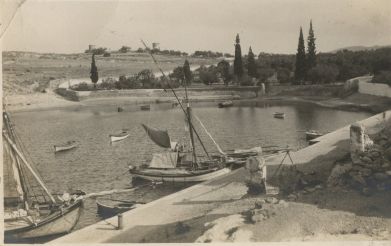
|
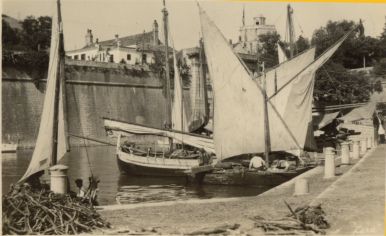
|
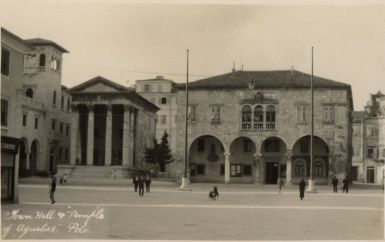
|
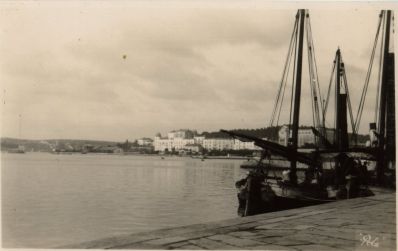
|
The top two pictures are of Roman remains at Pola. On 8th October "London" hoisted the Vice Admiral's flag and on 9th October they sailed for Taranto. The bottom two pictures are views of Taranto, where "London" arrived on 11th October 1929, after carrying out an 8 inch full calibre shoot at Sussex. On arrival they fired a large number of salutes, no doubt because of so many Italian admirals in their top naval base. I don't suppose anyone could have imagined that in ten years time this same fleet would attack and sink half the Italian fleet there with Swordfish torpedo aircraft. See the description in Bow Bells pages 105-106.
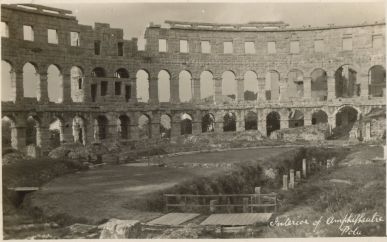
|
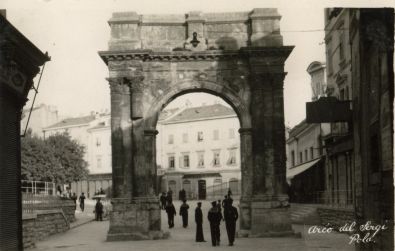
|
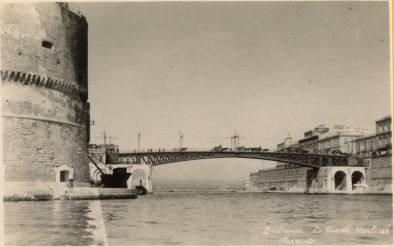
|
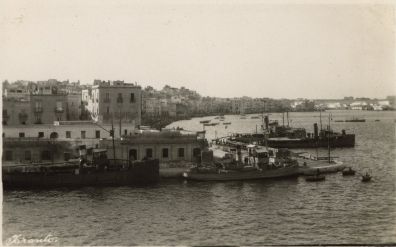
|
A mixed bag. The top left photo is from Zara and really belongs to page 26, but being vertical was hard to fit in. The top right is from the Kaiser Palace gardens, Corfu, which was the next port of call. The bottom two pictures are from Taranto.
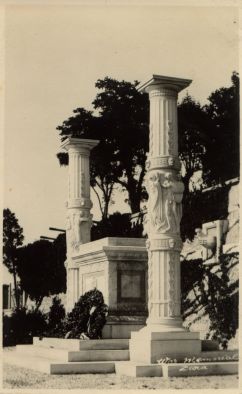
|
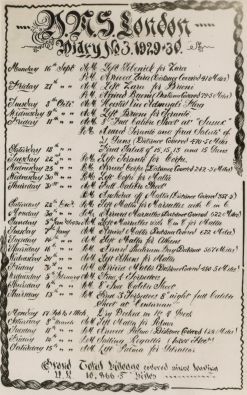
|
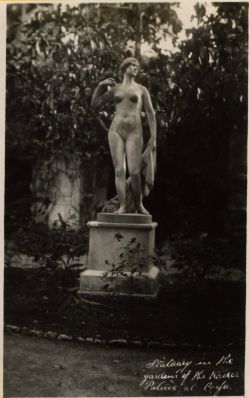
|
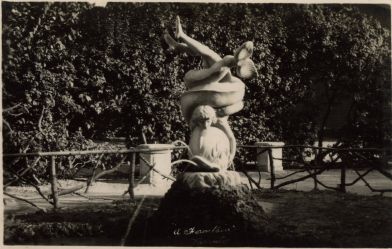
|
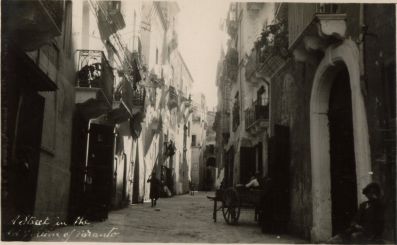
|
The top left photo could be either Corfu or Taranto, the caption is unreadable. The top right appears to be the cathedral in Sebenico, visited previously on page 24. The bottom left has no caption. The remaining two photos are of Venice. The ship did not visit Venice, but whilst at Brioni several groups went on organised trips to Venice between 29th September and 6th October. They stayed at the Hotel Wagner (From Bow Bells pages 102-103).
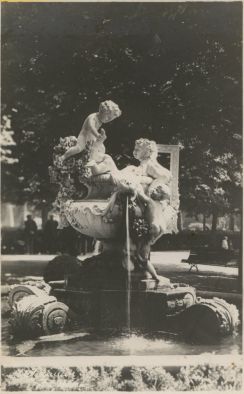
|
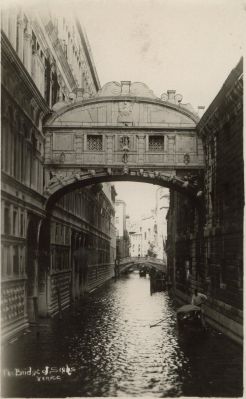
|
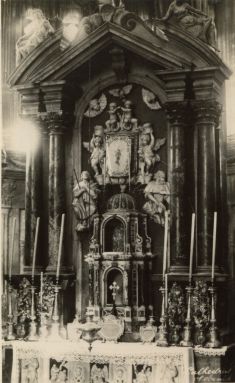
|
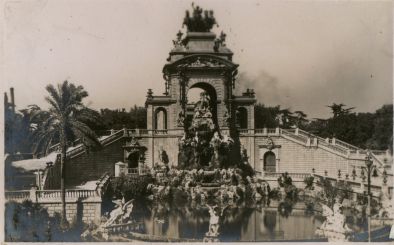
|
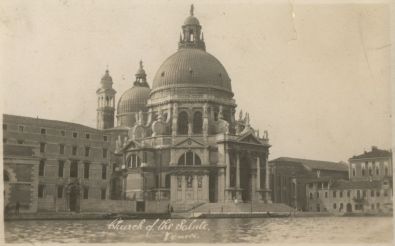
|
Four more views of Venice.
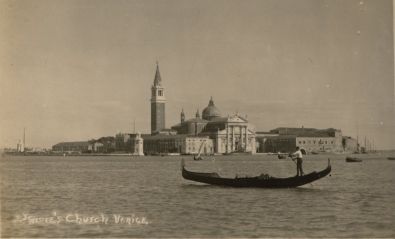
|
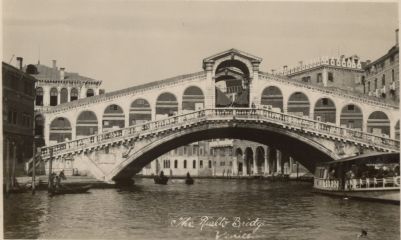
|
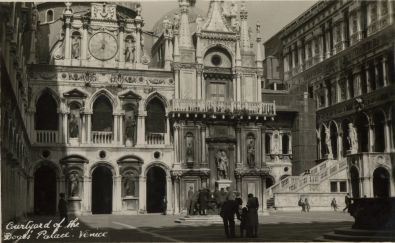
|
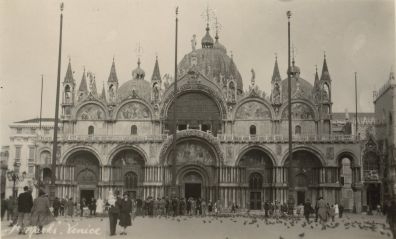
|
The fleet left Taranto for Corfu on October 22nd and arrived on the 23rd. The photos on this page are taken at Corfu. See the description in Bow Bells pages 107-108.
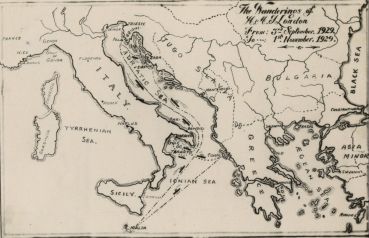
|
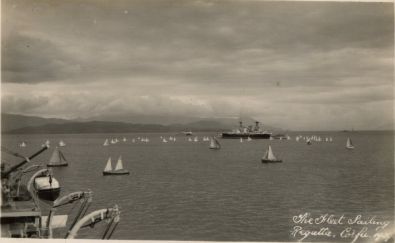
|
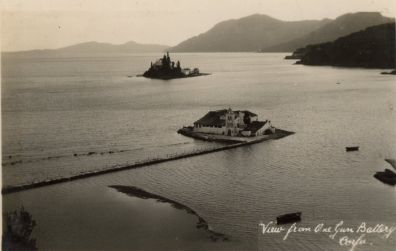
|
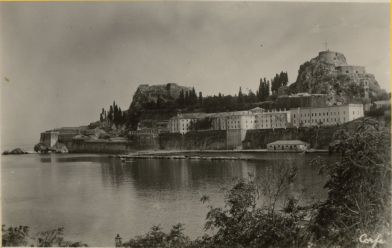
|
Three views of Corfu, the Kaiser's Palace seems to have been a popular visit. The bottom right picture is the cemetery of the Battle of Doiran in Greece (identified thanks to Theodoros Metallinos). The fleet left Corfu on 30th October and arrived at Malta on the 31st. Whilst there "London" carried out a self refit. See the description in Bow Bells pages 108-110.
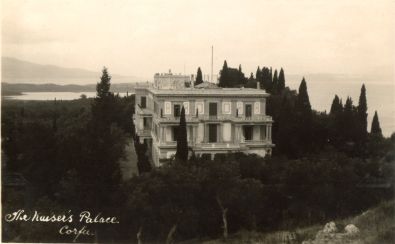
|
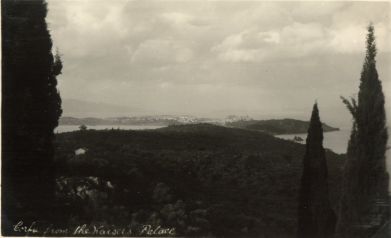
|
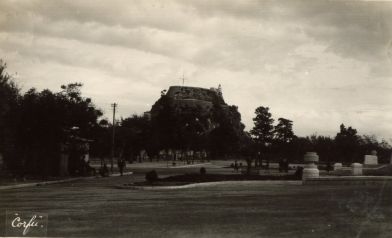
|
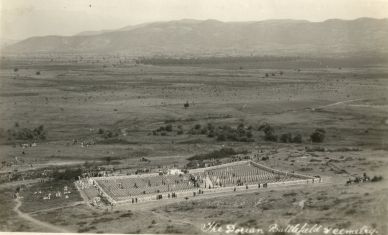
|
On 28th December 1929 "London" sailed from Malta for Marseilles, arriving on 30th December and leaving on 5th January 1930. The photos on pages 33-35 are all from there and the captions are self explanatory.
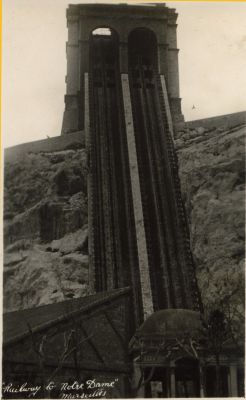
|
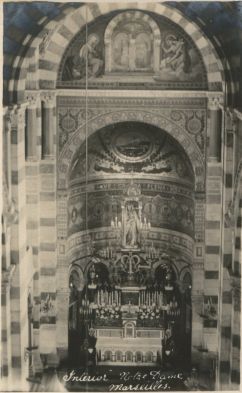
|
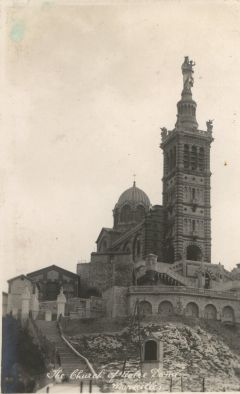
|
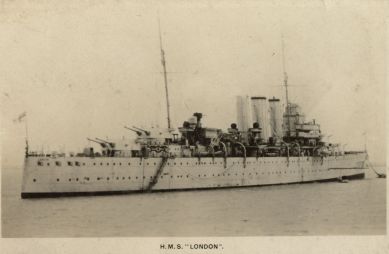
|
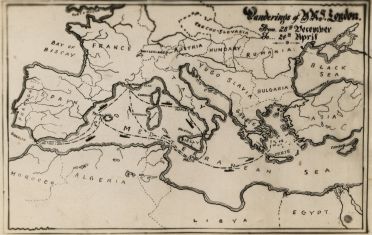
|
See description on Page 33.
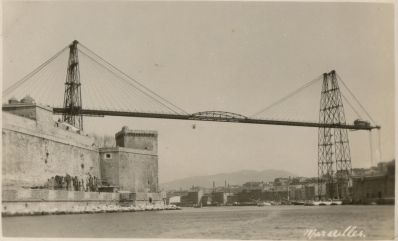
|
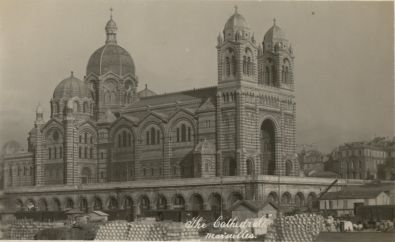
|
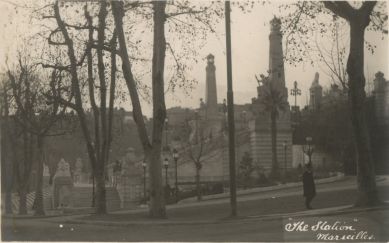
|
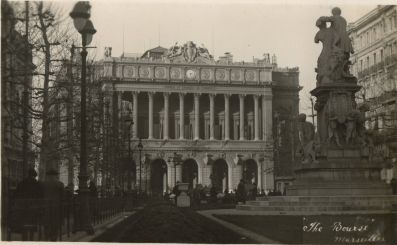
|
See description on Page 33.
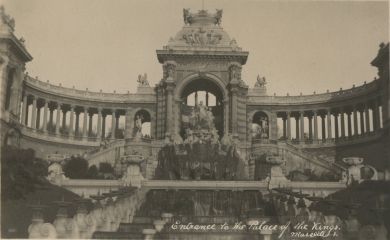
|
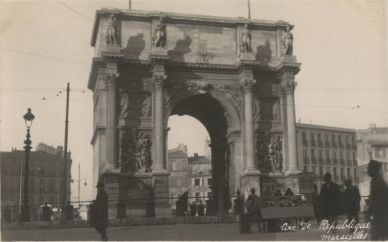
|
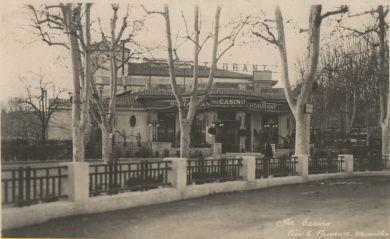
|
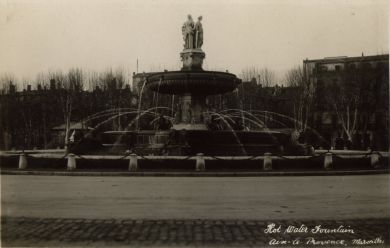
|
"London" arrived at Malta on 7th January 1930 and left again for Athens on 14th January. She arrived on the 16th. The photos on these pages are all taken on this visit, with the exception of the top right, page 39, which is from Marseilles and put there because we needed somewhere to put a vertical picture. The captions are all self explanatory and some of the pictures are commercial postcards. It is a pity that the relevant parts of Bow Bells are missing to flesh out the story. The country pictures seem very basic.
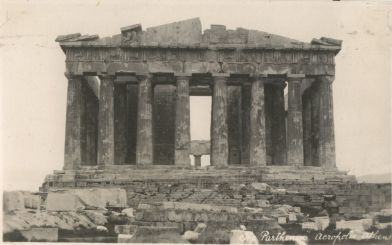
|
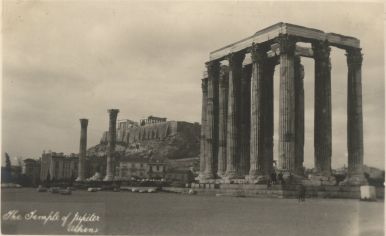
|
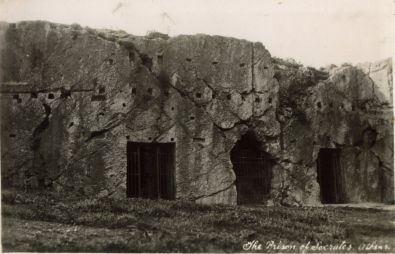
|
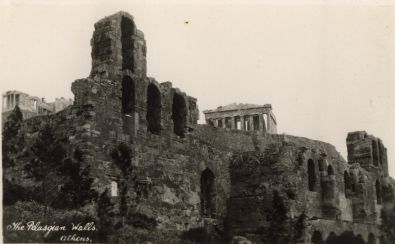
|
See description on Page 36.
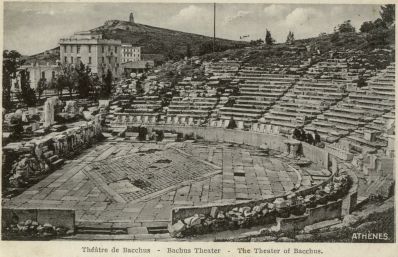
|
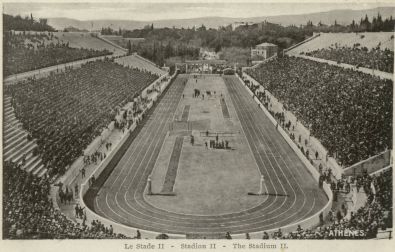
|
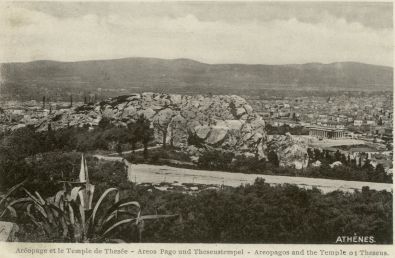
|
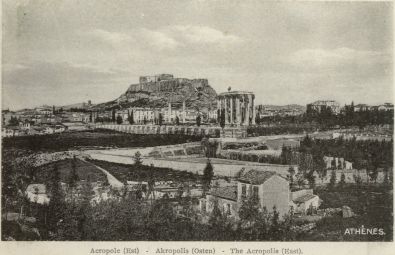
|
See description on Page 36.
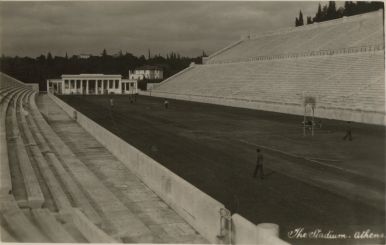
|
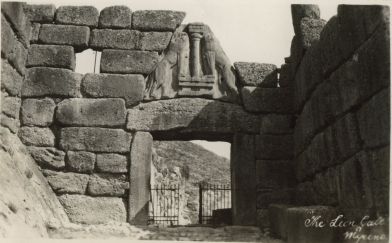
|
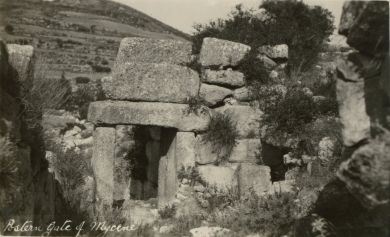
|
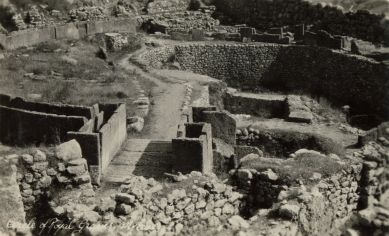
|
See description on Page 36.
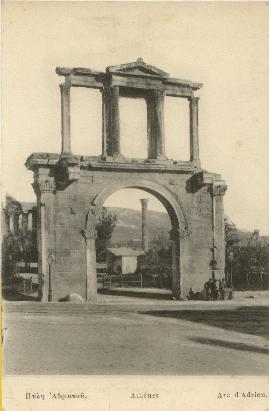
|
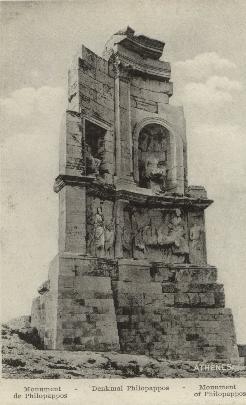
|
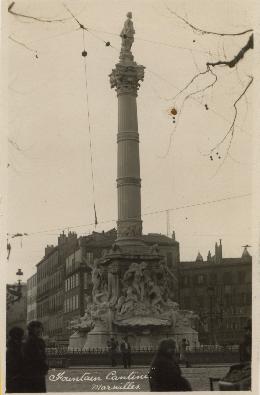
|
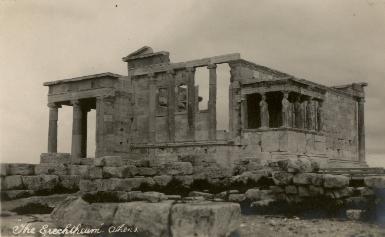
|
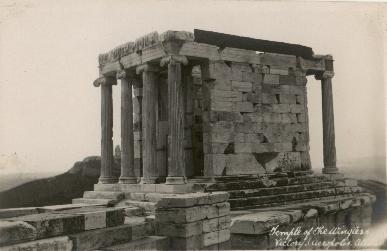
|
See description on Page 36.
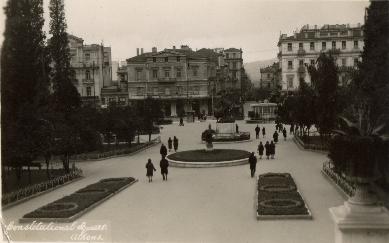
|
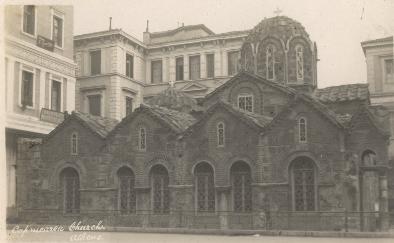
|
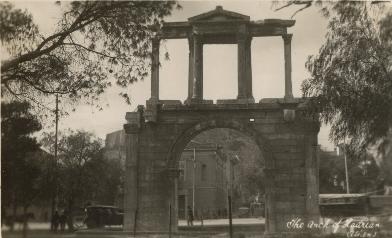
|
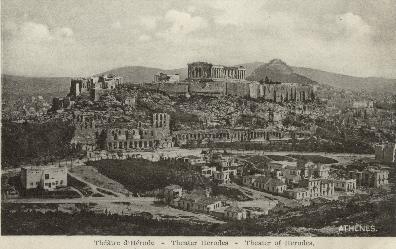
|
See description on Page 36. The top left picture is from Corfu. Country ladies from the Corfiot village Gastouri are dancing at the local festival. The specific spot and the olive tree has been the common place for the local festival for ages (identified thanks to Theodoros Metallinos).
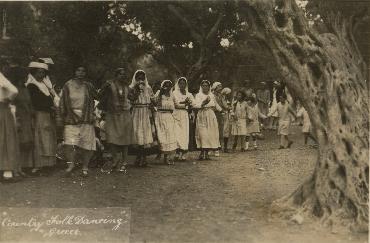
|
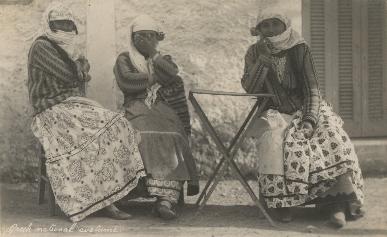
|
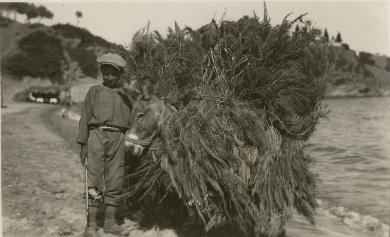
|
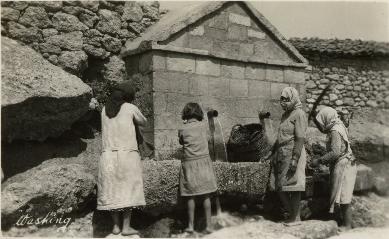
|
The top left picture is from Athens. "London" sailed from Athens on the 29th January and arrived at Malta on the 31st. The top right and bottom left pictures are of paravane practice. Paravanes were wire cutting devices for cutting the mooring wires of mines. They were run from either side of the bows and the idea was that the mine mooring wire was directed along to the cutting wire which then cut it and caused the mine to bob up to the surface, where it would be destroyed by rifle fire. The bottom right picture, showing an orchestrated explosion of submarine mines must have been an excuse for getting rid of some out of date explosives. Considering the state of the economy and the running down of the fleet at that time, I can't imagine useful explosives being wasted in this way.
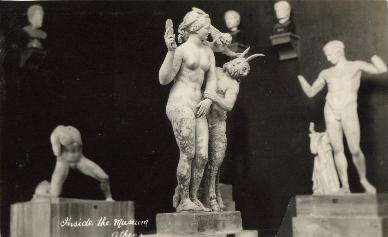
|
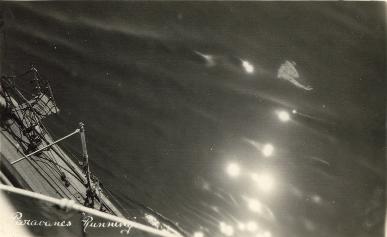
|
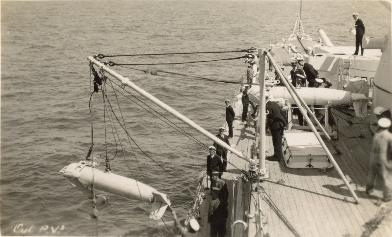
|
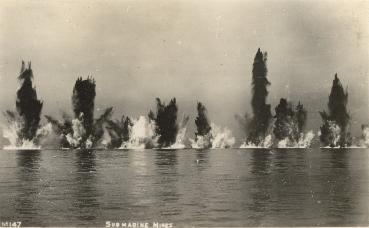
|
The top two pictures are self explanatory. The bottom two show towing ship practice, "London" being towed by a Hawkins class cruiser. It would appear that the tow was passed in the first place by the ship's cutter, which can be seen in the bottom left picture.
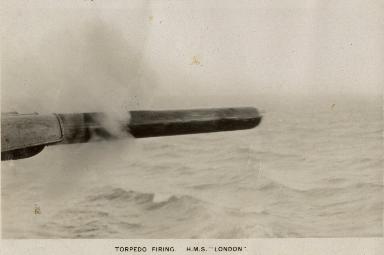
|
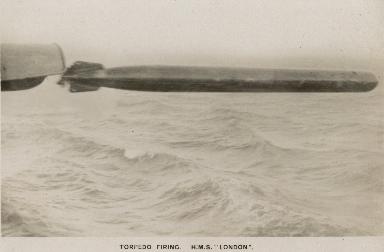
|
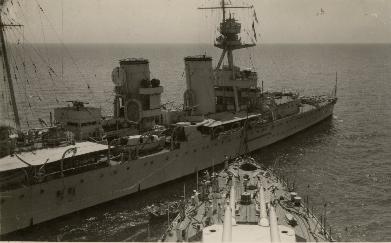
|
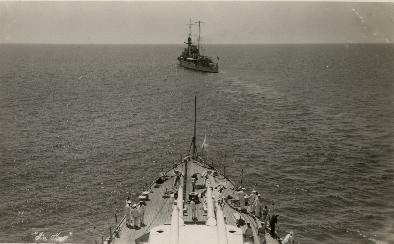
|
The top two pictures, of an air pageant at Hal Far airfield, Malta, show that in the ten years after the first world war military aircraft had not developed very much. The airfield played an important part in the second world war with vastly different aircraft, although strangely enough, at the start the three Gladiator aircraft, Faith, Hope and Charity were old fashioned biplanes rather like these. The carneval picture was probably taken in the summer. The bottom right picture, of Strada Reale, Valletta, was taken from just inside the Porta Reale, shown on page 13. Porta Reale is Royal Gate and Strada Reale is Royal Street, known to most of us as Kingsway.
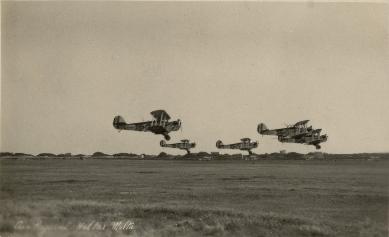
|
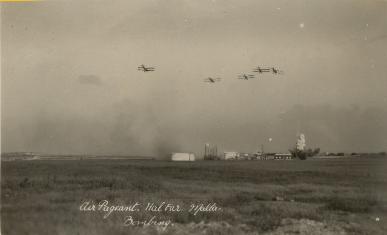
|
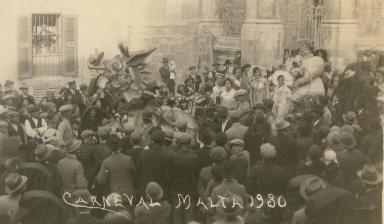
|
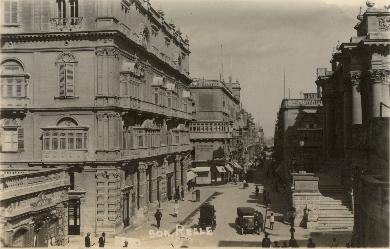

|
From 31st January to 8th March "London" exercised from Malta and spent time in dry dock getting shipshape again. On 8th March the fleet left Malta for Palma. The top left picture shows the fleet on passage. We can see from the left a Queen Elizabeth class battleship, a battlecruiser, either Renown or Repulse, another Queen Elizabeth class battleship, the aircraft carrier Eagle and an R class battleship. The top right shows the fleet at anchor in Palma, Majorca. These days it is hard to imagine so many battleships and cruisers in what was after all only a part of the fleet. The remaining pictures are a view of Palma and regatta.
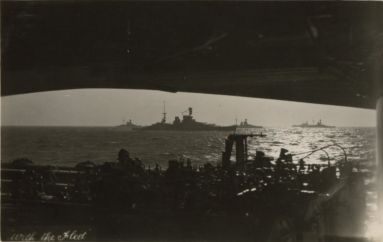
|
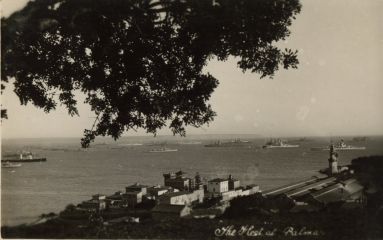
|
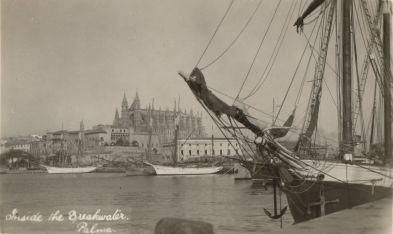
|
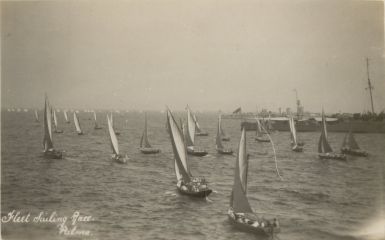
|
On 15th March the fleet left Palma for Gibraltar, arriving on 18th. On 28th March the Mediterranean Fleet Review was held on the North Front, Gibraltar. The pictures on this page show that review. The bottom right picture shows a view of La Linea in Spain across what was known as the Neutral Ground. Since Britain captured the Rock in 1704 the Spaniards had been besieging it, trying to recapture it and the names reflect this - La Linea was where the Spanish lines were, just out of gunshot in those days, and the Neutral Ground is self explanatory. It is now the Gibraltar airfield.
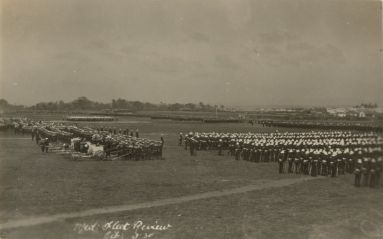
|
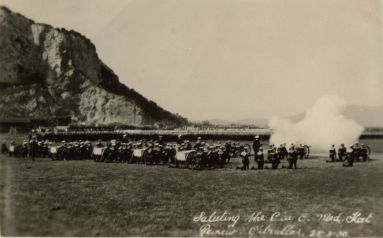
|
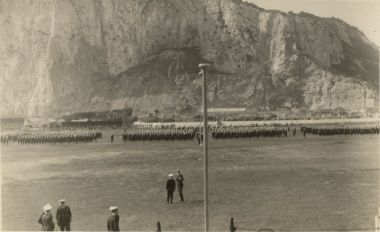
|
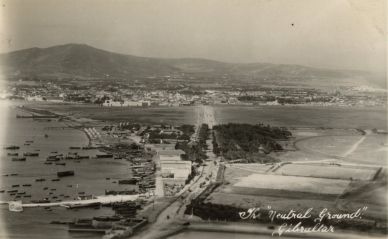
|
The top right picture shows the Governor taking the salute on Main Street, Gibraltar. If all of those men marched past through Main Street it must have been quite a spectacle. The next is of the fleet at sunset. The bottom left picture is of either Courageous or Glorious after what must have been a spectacular collision with the liner in the next picture.
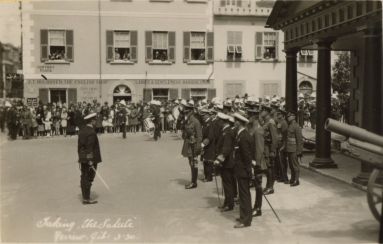
|
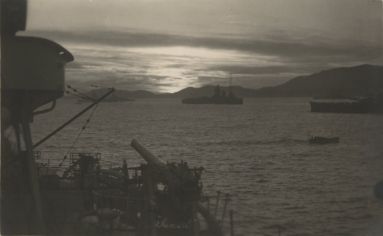
|
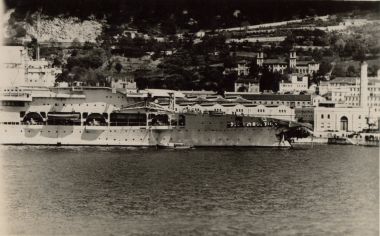
|
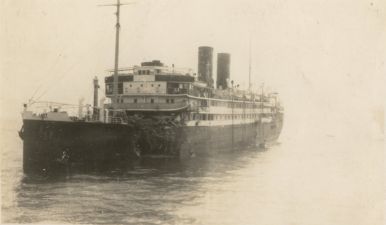
|
After manoeuvres with the Med fleet, "London" sailed for Marseilles on 7th April, arriving on the 10th. She left Marseilles on 12th April for Naples where she arrived on the 14th. The pictures on this page are views of Naples, the top left showing the Capodimonte.
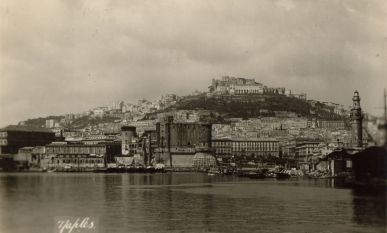
|
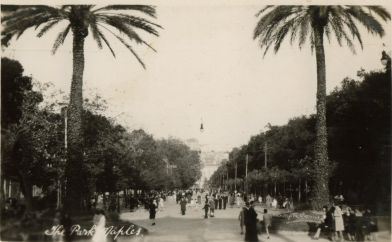
|
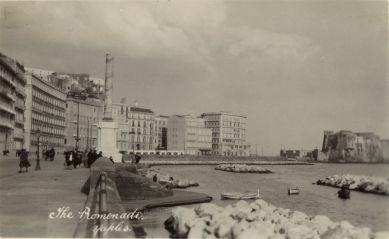
|
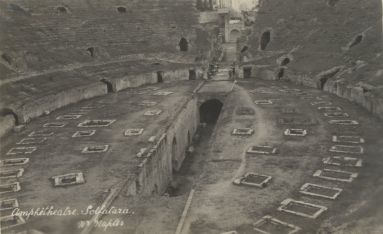
|
The top two pictures are from the Solfatara volcano. Solfatara is a shallow volcanic crater at Pozzuoli, near Naples and is part of the Campi Flegrei volcanic area. The name comes from the Latin, Sulpha terra, "land of sulphur". It was formed around 4000 years ago and last erupted in 1198 with what was probably a phreatic eruption - an explosive steam-driven eruption caused when groundwater interacted with magma. The crater floor is a popular tourist attraction, as it has many fumaroles and mud pools. The area is well known for its bradyseism. The bottom two are of Vesuvius, taken on 20th April 1930.
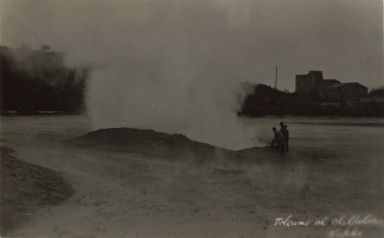
|
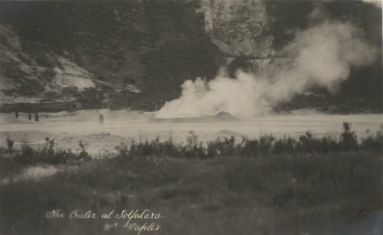
|
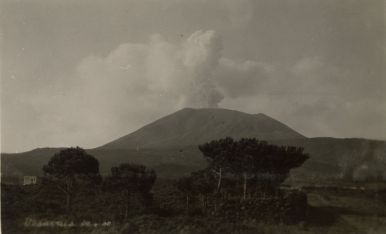
|
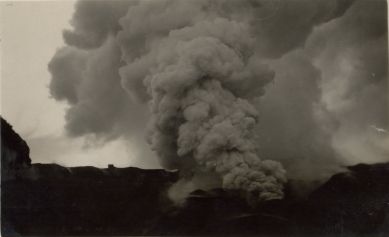
|
|
The top left picture shows the railway to Vesuvius. The top right picture is of Pugliano station which was the lowest station on the Vesuvius railway, built for Thomas Cook to take tourists up Vesuvius. It was demolished in 1972-1973. The remaining pictures and those on page 51 were taken on a visit to Pompeii. |
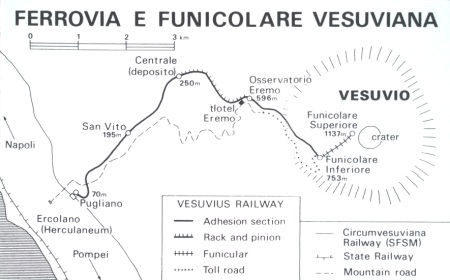
|
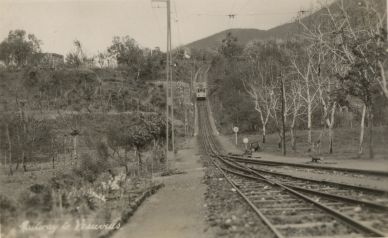
|
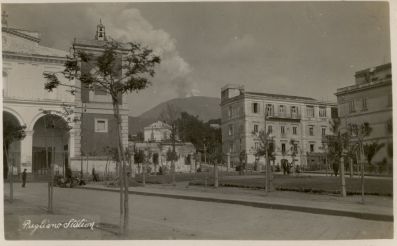
|
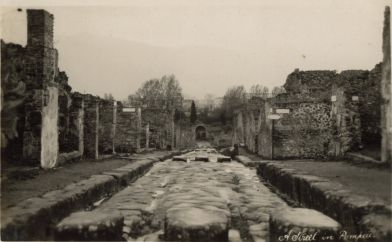
|
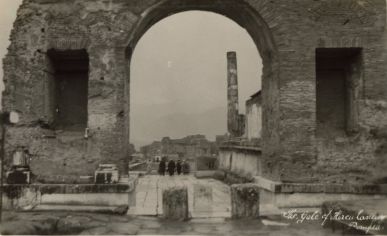
|
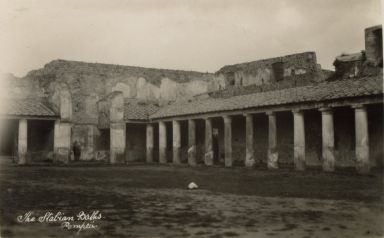
|
See description on Page 50.
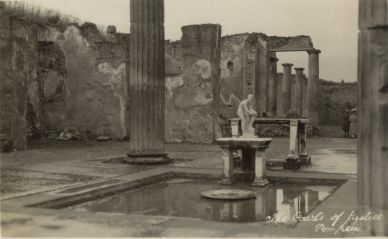
|
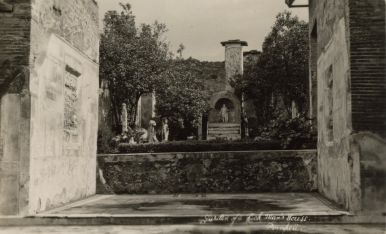
|
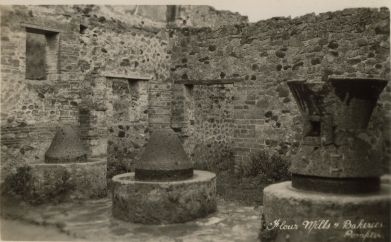
|
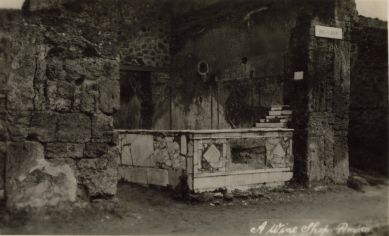
|
The top left picture is of Vesuvius, 20th April 1930. The centre and right are self explanatory. On 23rd April "London" left Naples for Malta, carrying out a full calibre shoot on the way, arriving at Malta on the 25th. The bottom left picture shows a Queen Elizabeth class battleship, viewed from Valletta. The bottom right picture we know from the follow excerpt from Bow Bells page 239 to be HMS Warspite carrying the departing CinC, Sir Frederick Field being cheered by the fleet. 41 ships forming a line nearly 10 miles long must indeed have been an imposing spectacle.
MAY 19th 1930
The fleet sailed at 7.30 a.m. under the orders of V.A.I. forming up in a single line of 92½ cables long and comprised of 41 ships in the order 1st B.S., 1st C.S., 3rd C.S., Cairo., 4th D.F, 1st D.F., 2nd D.F., Douglas., K26, and 2 "L" S/M's. Truly an imposing spectacle. The departing C in C, Sir Frederick L. Field in the "Warspite" (preceded by the "Bryony" with all the Nobility and Society of Malta on board) left harbour at 10 a.m, and passed down the whole of the line at a distance of 2 cables. Each ship gave the C in C. 3 cheers as he passed on his way home, and all flew the signal "Goodbye Good Luck". This was answered by "Thank you" from the Fleet Flagship. A really wonderful "send off".
Later we anchored off the breakwater for the remainder of the day.
Regatta practice and "Movies" helped to pass away the evening.
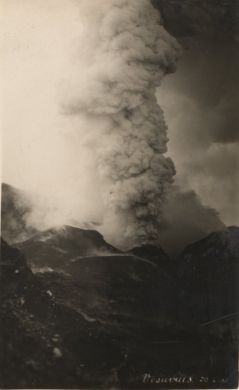
|
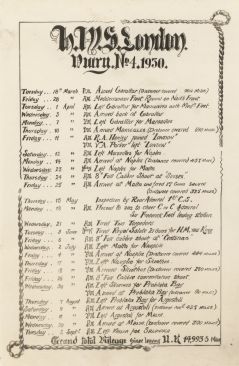
|
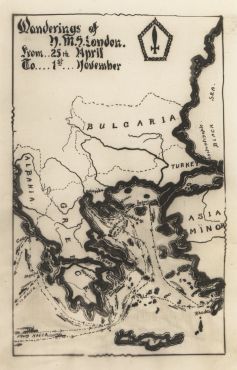
|
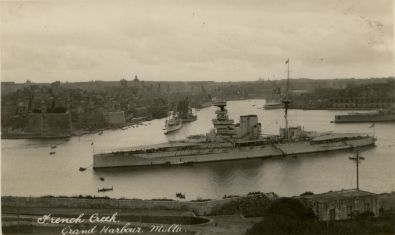
|
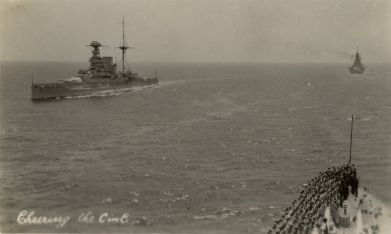
|
The top left picture gives a good indication of the size of the fortifications of Valletta, which made it impregnable until the advent of modern weapons. It is taken from the bridge going into the Porta Reale, the main entrance into Valletta. As we look down the huge ditch we can see two C class cruisers in Grand Harbour. We can also see a comparatively modern addition, the Baracca Lift. The top right picture shows the same fortifications from the Grand Harbour side. The reason for the lift can be seen from here. Previous to its construction anyone landing by boat from ships in Grand Harbour had to walk a long way to the left up quite a steep hill then turn and come back to the Porta Reale to get into Valletta. The bottom two pictures show views of Grand Harbour from the top of the Barraca. Bottom right shows a County class cruiser.
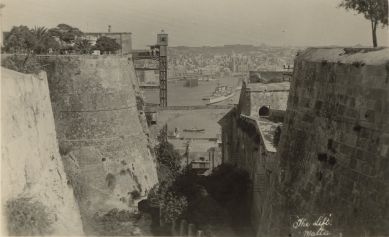

|
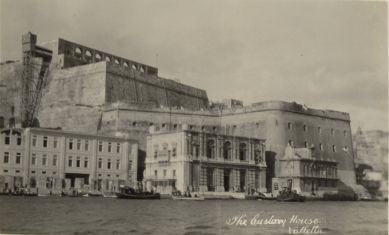

|
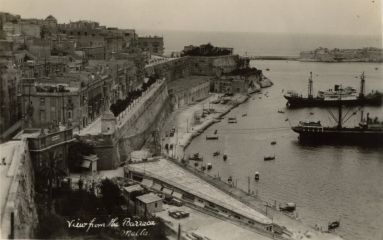

|
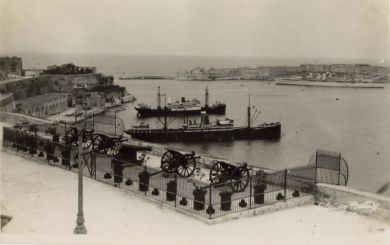

|
After Valletta was built the fortifications were extended out to Floriana. The top left picture shows the space in between, taken from the Porta Reala, Valletta's main gate. The granaries were situated here and the bottom left picture shows one of these in use.
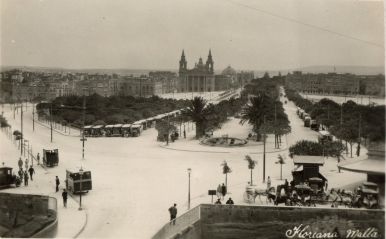

|
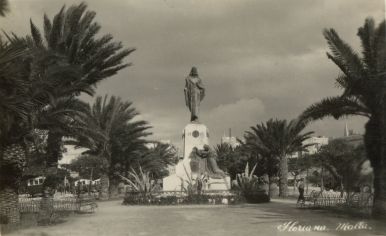

|
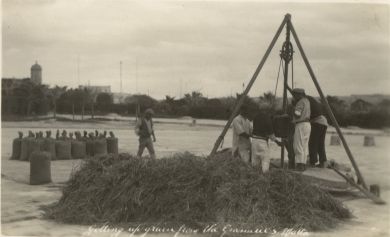
|
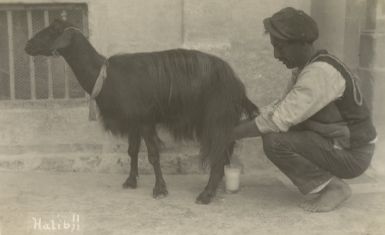
|
The top two pictures show views of Fort St Angelo and Dockyard Creek. In the top left can be seen a Queen Elizabeth Class battleship and an aircraft carrier, probably Courageous. Top right shows a County Class cruiser in Dockyard Creek. In the bottom left picture of Sliema can be seen a good view of a dgaissah (usually pronounced by the fleet as dyso). These boats were the normal way of getting ashore as nearly all the ships were tied up in the harbour and it saved the ships' boats a lot of wear and tear as well as providing a living for quite a lot of people. The bottom right picture has quite an interesting history. In the 1870's Armstrong built a 100 ton gun that outperformed any other gun then in use. The Admiralty turned it down but Italy took it up and built two battleships, the Duilio and the Dandolo, each carrying four of these guns. The Admiralty suddenly realised that the Italians could, if they wanted to, destroy Malta and Gibraltar without any British gun being able to prevent them. To counter this they bought four of these guns, two for Malta and two for Gibraltar. This is the surviving one at Malta, which protected Grand Harbour. The other protected Sliema Creek. One of the Gibraltar guns also survives.
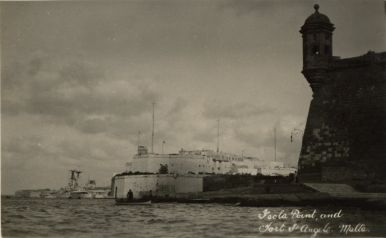

|
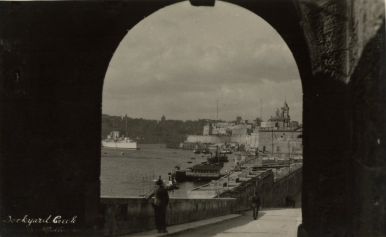
|
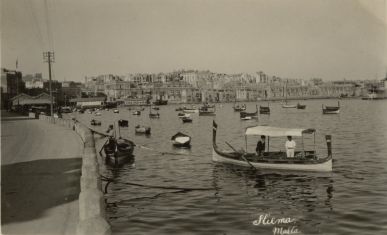
|
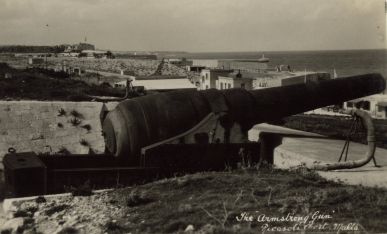

|
The first pictures are of an unidentified football competition. The event in the bottom left photograph is mentioned in Bow Bells page 245 as follows :
JUNE 8th SUNDAY.
While the day was yet in its infancy - or to be precise - in the neighbourhood of 1 am. the "Knight of Malta" Mailboat, went ashore off Fort St. Angelo (Egmont.) The "Q.E" and "Eagle" put on searchlights showing boat well up on the beach. She was refloated by the aid of dockyard tugs and having sustained little or no damage, was able to sail eventually at 4 a.m. for Tunis - with the mail.
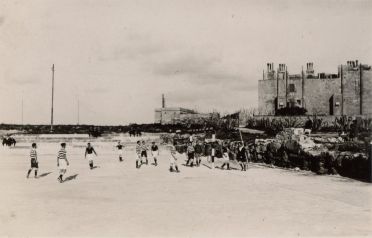
|
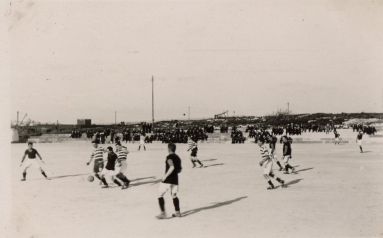
|
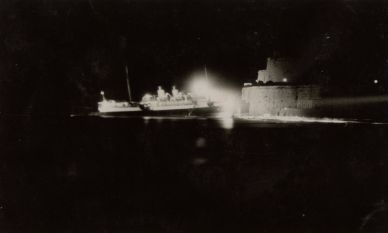
|
The fleet sailed from Malta on July 2nd and arrived at Nauplia on July 4th (see Bow Bells pages 251-254). The first three pictures are of Nauplia, the bottom left having an interesting history. During the 19th century War of Independence Nauplia was established as the capital for the Greeks by Kapodistrias, the first governor of Greece. Following the assassination of Kapodistrias, Otho, a young Bavarian King was sent to rule Nauplia, but his stay was brief. In 1834, one year after the king's arrival, the capital was moved to Athens. The introduction of a Bavarian King Otto (or Otho) by the western powers hardly changed matters for the better as the Bavarians made the time honoured mistake of attempting to coerce the Mani into compliance with government policies. These included the paying of taxes and, from the Maniate point of view, the equally outrageous notion that the tower houses should be pulled down. A battalion of blue clad Bavarian infantry was sent into Mani to lay down the law but failed to take into account the Maniates' fabled abilities as guerilla fighters. The Maniates surrounded the bewildered Bavarians, stripped them of both weapons and uniforms and sent them footsore and doubtless sunburned back to whence they had come. The Earl of Carnarvon visited Mani in this period and reported. "...the majority of the soldiers owing their lives to the contempt of their enemies, who sold them, naked and shivering, in the public market at the low price of two pence a-head".
From Nauplia the fleet visited Skiathos, Problaka Bay and then Argostoli, where the regatta was held. A blow by blow description of this is given in Bow Bells pages 278-288. The bottom right picture is of the winning Royal Marines Cutter Crew. Dad, Alfred James Morgan, is the second from the left, back row.
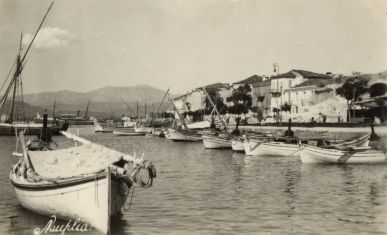
|
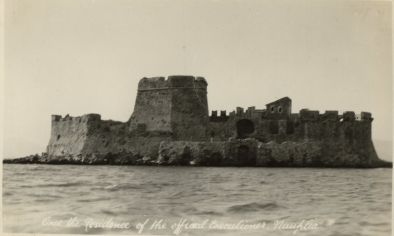
|
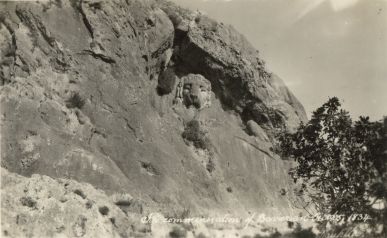
|
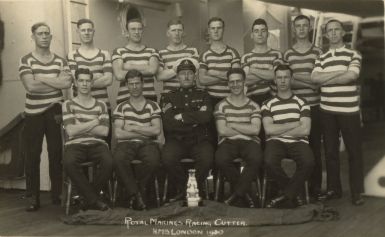
|
All pictures of the regatta at Argostoli.
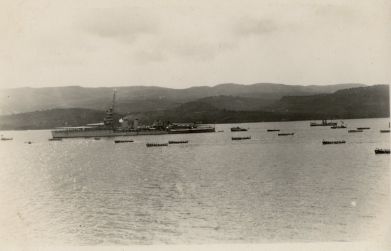
|
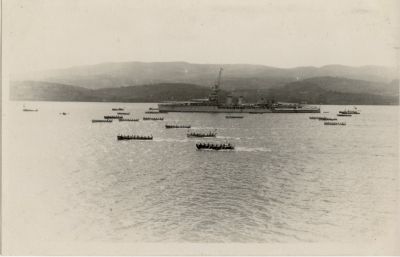
|
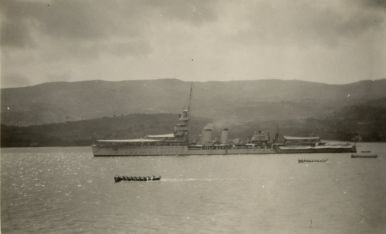
|
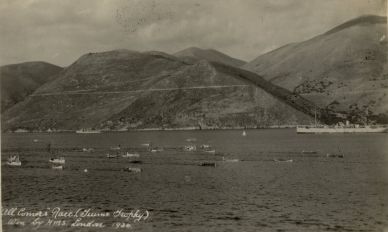
|
The first three pictures are of "London's" trophies from the regatta and the bottom right shows "London" flying the cock of the fleet flag.
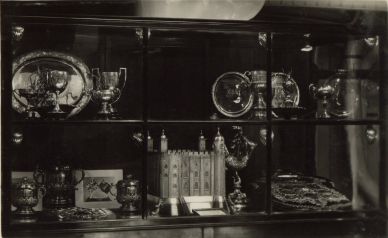
|
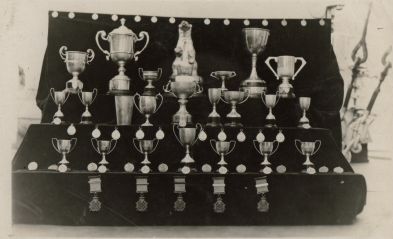
|
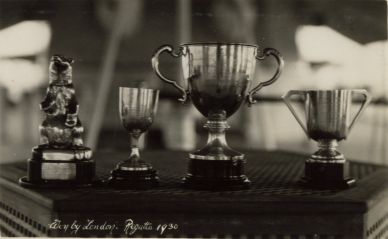
|
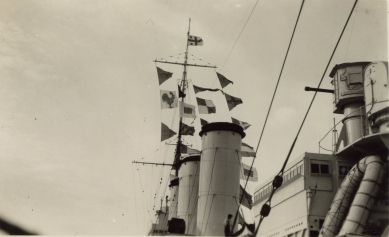
|
On 18th August the fleet left Argostoli for Malta, arriving 20th August. Centre top picture an unknown trophy the other two self explanatory. On 2nd September the fleet left Malta for Salonika, arriving on 5th September. The bottom two photos are from there.
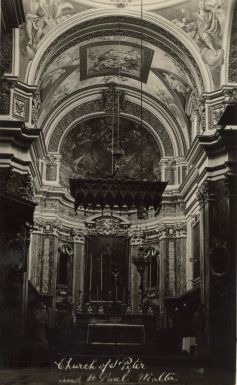
|
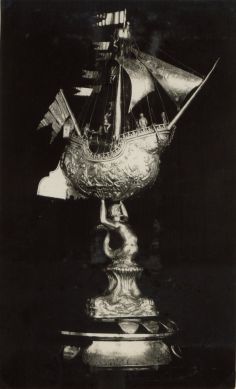
|
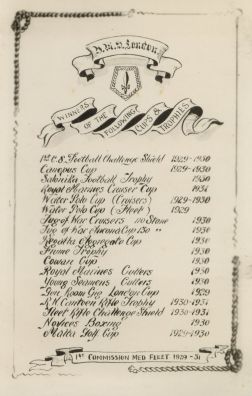
|
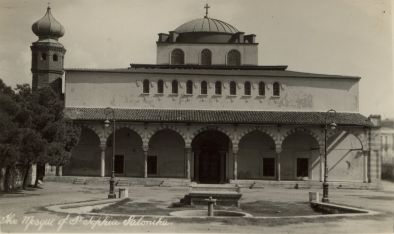
|
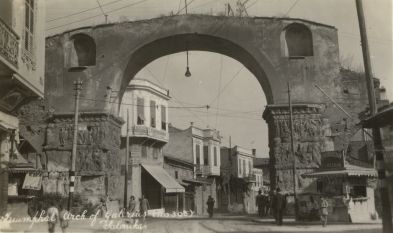
|
All pictures of Salonika. See the description in Bow Bells pages 263-264.
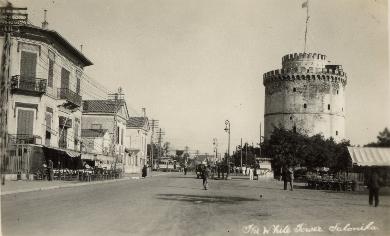
|
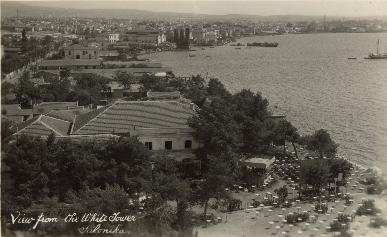
|
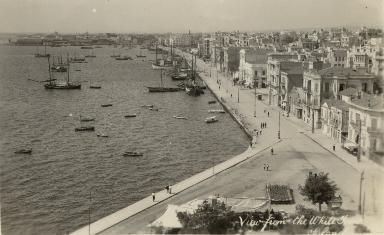
|
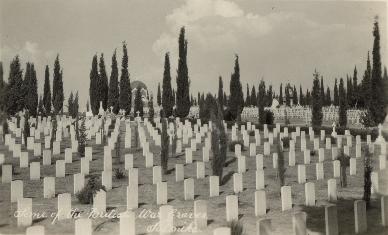
|
I dont know when these pictures were taken, but they are obviously on the Greek cruise.
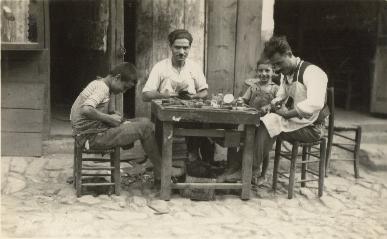
|
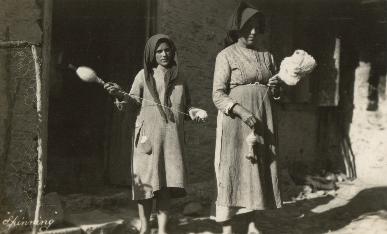
|
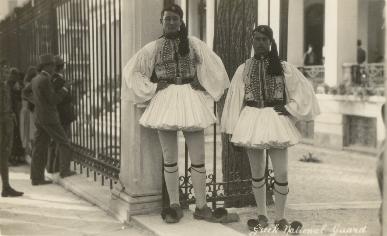
|
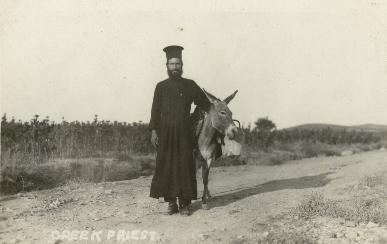
|
The pictures on this page are out of place. They should have been included when the fleet was at Problaka Bay, prior to the visit to Argostoli for the regatta. On 5th August the destroyer Ardent took parties from the other ships to visit these monasteries near Mount Athos. A good description of this visit is given in Bow Bells pages 266-269. From Salonica the fleet visited Imbros and then Rhodes.
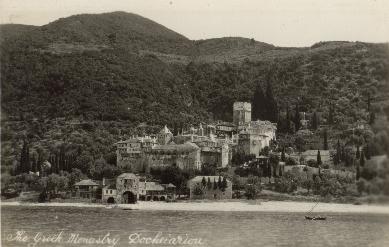
|
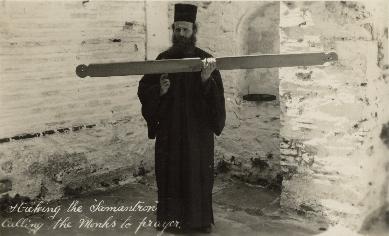
|
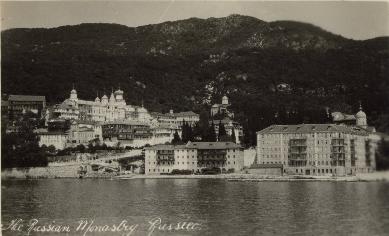
|
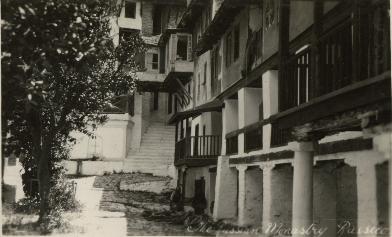
|
These are all pictures of Rhodes, the old town and fortifications still much as they were at the time of the siege of 1522. See the description in Bow Bells pages 265, 269-272.
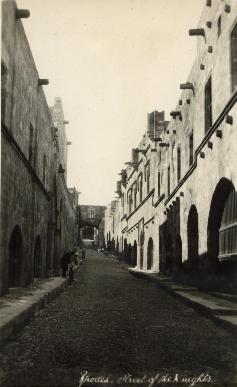
|
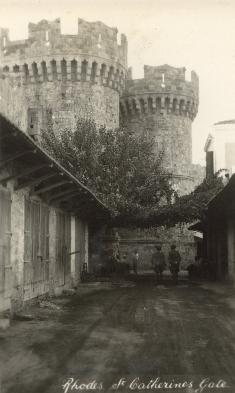
|
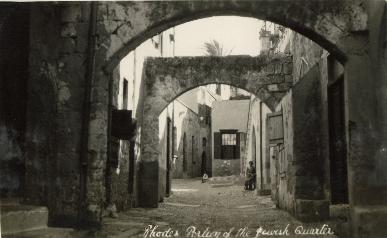
|
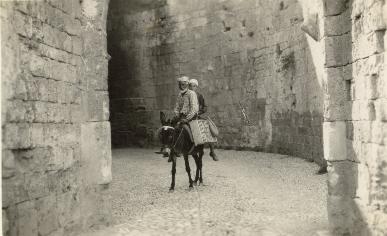
|
See description on Page 64.
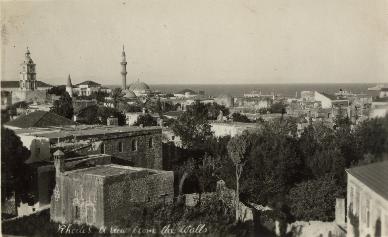
|
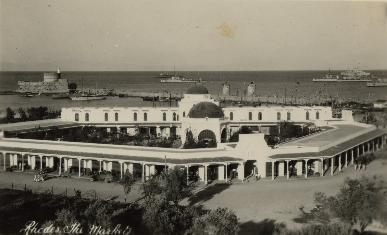
|
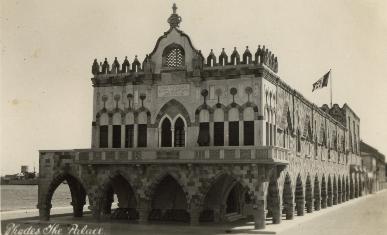
|
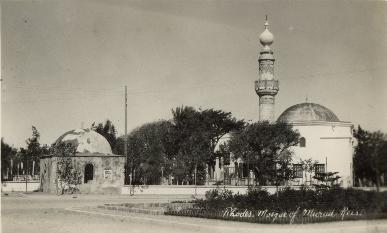
|
The top two pictures are of Lindos, a fortification near Rhodes. The bottom two of Rhodes harbour.
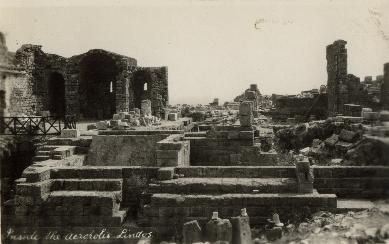
|
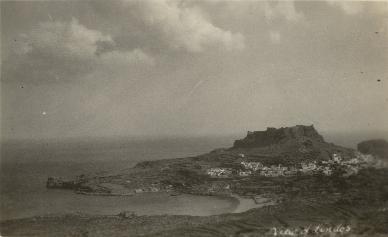
|
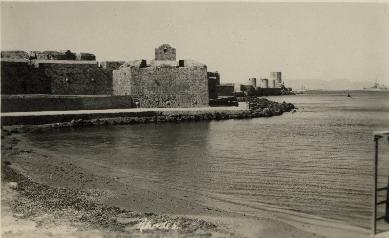
|
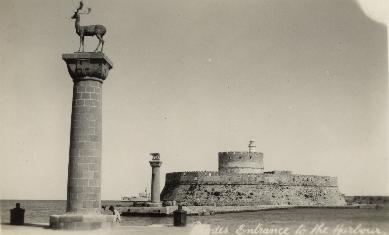
|
Top left shows Rhodes at sunset. Top right appears to be a licensed cab, from the badge on the drivers lapel. Bottom left the ships cats. Two were named Ginger and Smigget. There is no record of kittens. The bottom right show the map of the wandering of HMS London. The 2nd November to 25th April 1931 show London disappearing off the map from Gibraltar. I can remember Dad talking of a visit to Madeira, so this must have been it.
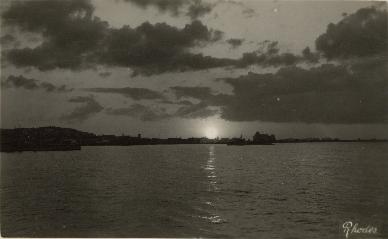
|
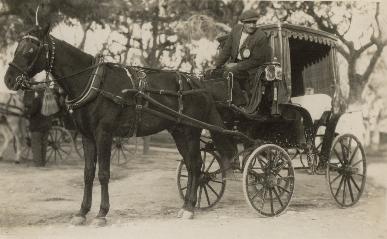
|
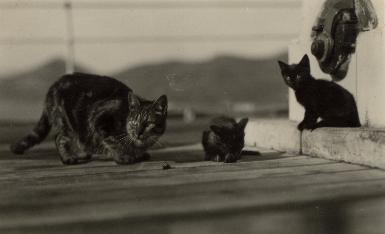
|
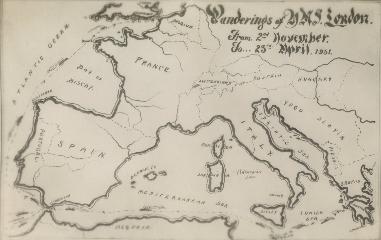
|
At the end of October 1930 London returned to Malta for a self refit, after which she remained there until after Christmas. The top left picture shows the battleships carrying Admirals aboard taken from London, who carried the flag of Rear Admiral Henley. Top right shows a messdeck decorated for Christmas. The bottom two pictures show Christmas celebrations after tot time. An excerpt from Day to Day -
DECEMBER 24th, CHRISTMAS EVE.
H.R.H. The Duke of Gloucester arrived during the forenoon in the P. & O. "Viceroy of India". He is returning to England from Abyssinia, where he attended the coronation ceremonies. On entering Grand Harbour he was given a 21 gun salute, H.R.H. left during the afternoon.
The guests began to arrive at 4 p.m. for the "At Home" given on board by the ship's company. Tea lasted from 4.30 to 5.30 p.m. Dancing in the starboard waist was next item on the programme. After this the distribution of toys to the children by A.B. Parratt, who was suitably attired as Father Christmas. After this the concert party performed in the port waist giving a wonderful show after only ten days' rehearsing. All enjoyed the panto "Aladdin", and the concert party are to be congratulated on their fine effort. The enjoyable party ended at 7.30 p.m. Congratulations are due to the organisers and a host of willing assistants not forgetting the work of the ladies who made Christmas Eve one of the happiest we have ever spent.
DECEMBER 25th, CHRISTMAS DAY.
A merry Christmas and a very happy and prosperous New Year to all.
Sunday Routine is carried out until 10.45 a.m., with usual early service of Holy Communion.
No Divisions.
At 10.15 a.m. there was a short Carol Service which a number of ladies attended.
After this the Admiral, Captain, Commander and about 100 followers went the rounds of the messdecks, which had been splendidly decorated. After the rounds, everyone "tucked in" with great gusto and after a prolonged sitting it was a case of "No thanks, I can't go any more". During the afternoon some endeavoured to sleep, but they were rudely awakened by the band and their retinue of merry lads.
In the evening a few of "London's" concert party gave turns at the Y.M.C.A.
On the whole a very well spent Christmas Day.
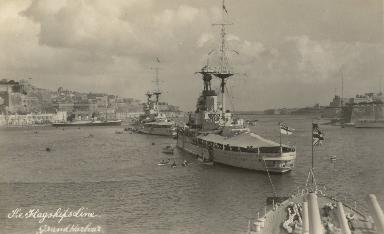
|
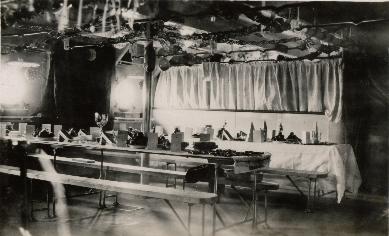
|
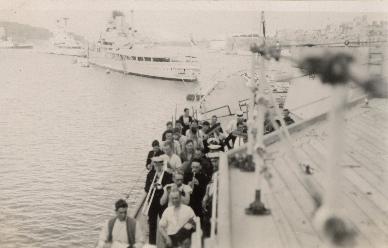
|
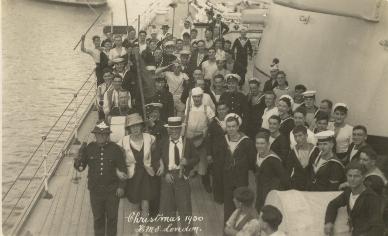
|
Top left picture shows the crew relaxing after dinner. Dad, Alfred James Morgan, is the hatless Royal Marine at the front left of the picture. The other three pictures are cartoons of uckers, the naval form of ludo, which, as you can see, was taken rather seriously.
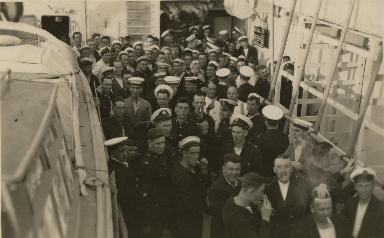
|
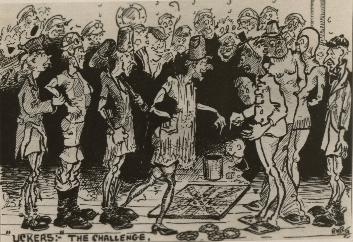
|
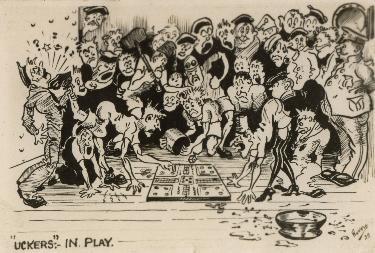
|
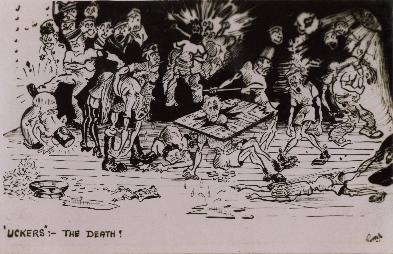
|
The four pictures on this page show air attacks on the fleet during the winter cruise at the Greek islands of Zante and Drepano Bay, January 15th and 16th 1931. See the description in Bow Bells page 354.
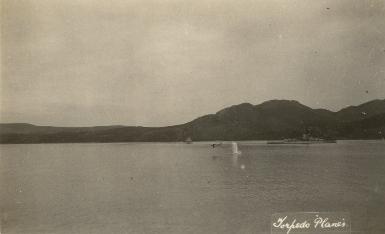
|
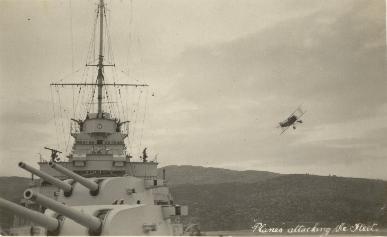
|
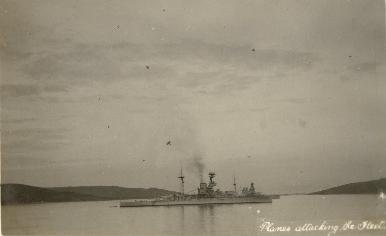
|
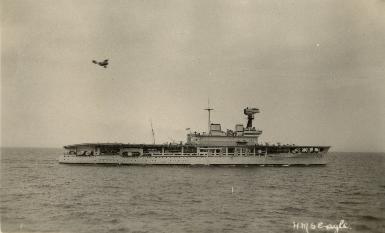
|
The Cruiser's Marathon and football matches took place in Malta prior to the winter cruise.
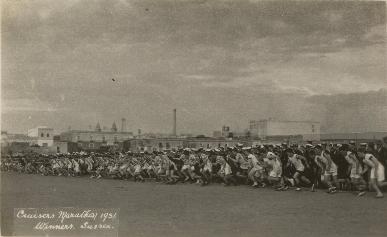
|
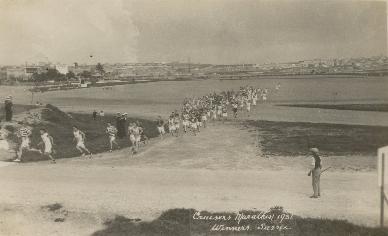
|
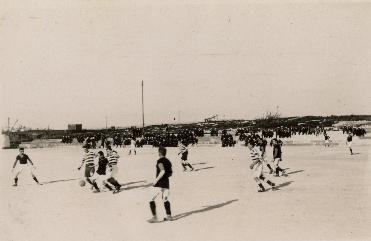
|
Between January 17th and January 28th 1931 the ship visited Zaverda, in Greece where these pictures were taken. The ship can be seen at anchor in the top left picture.
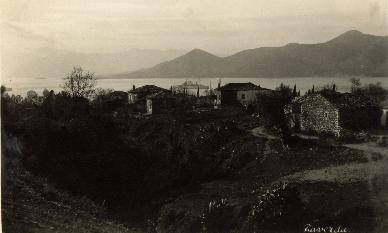
|
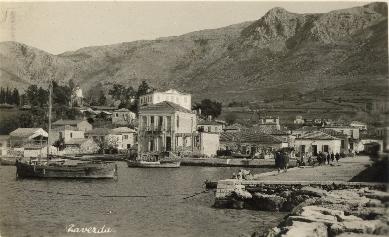
|
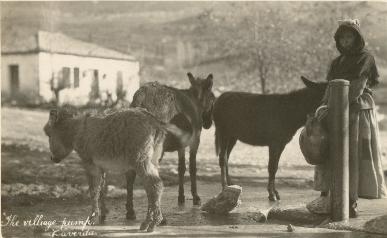
|
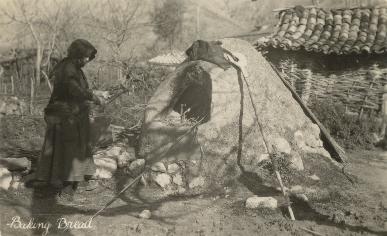
|
See description on Page 72.
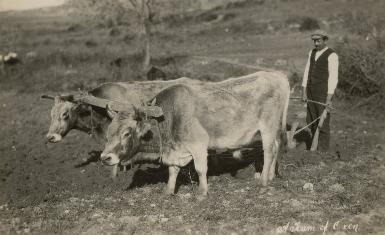
|
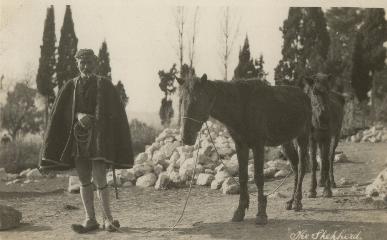
|
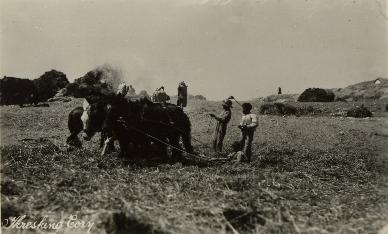
|
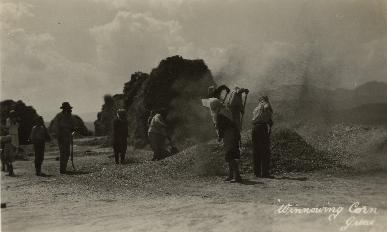
|
These pictures were taken as the ship left Malta for the last time that commission, on 9th March 1931. The paying off cargo, in this case consists of cages of canaries. One of these belonged to Dad. The bird was named Mac and he lived until 1941. He escaped from his cage during an air raid, returned a couple of days later and then died, possibly of fright and exhaustion.
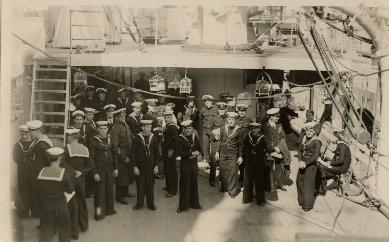
|
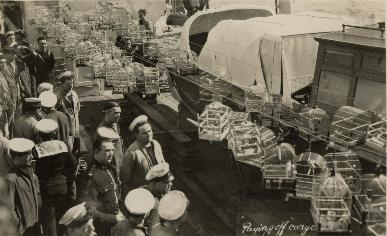
|
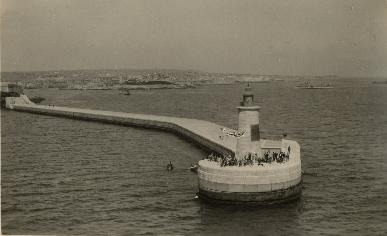
|
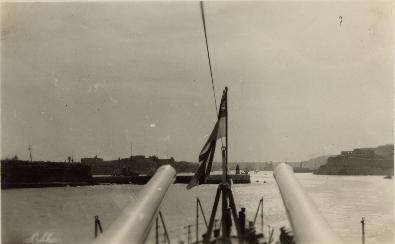
|
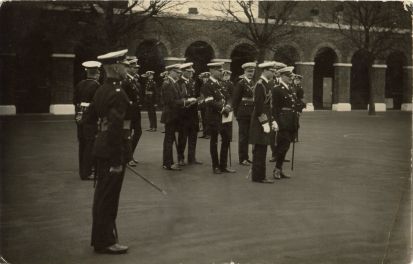
|
Visit of the Duke of York (later King George VI) to depot. |
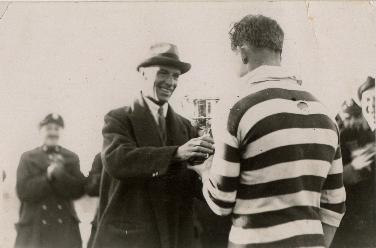
|
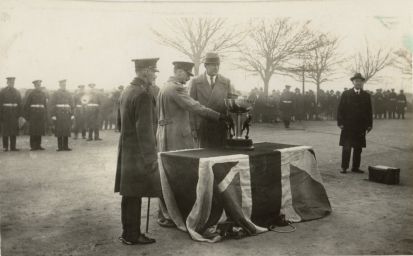
|
Unknown sports day, presumably in England by the winter uniforms. |
|

|
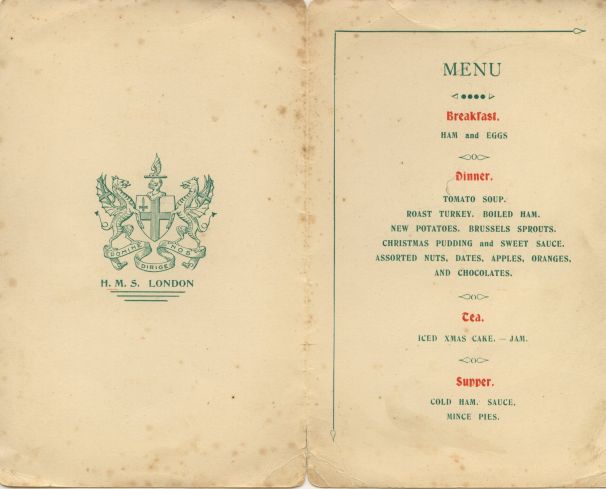
|
Christmas Menu, 1930. |
|
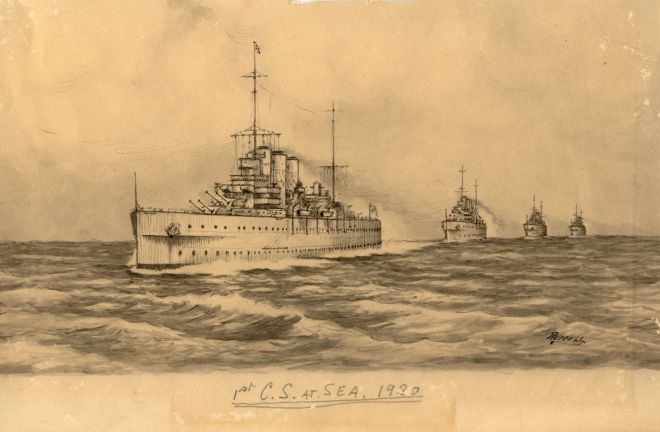
|
Drawing by a friend of the First Cruiser Squadron, London, Sussex, Shropshire, and Devonshire, at sea, 1930. |
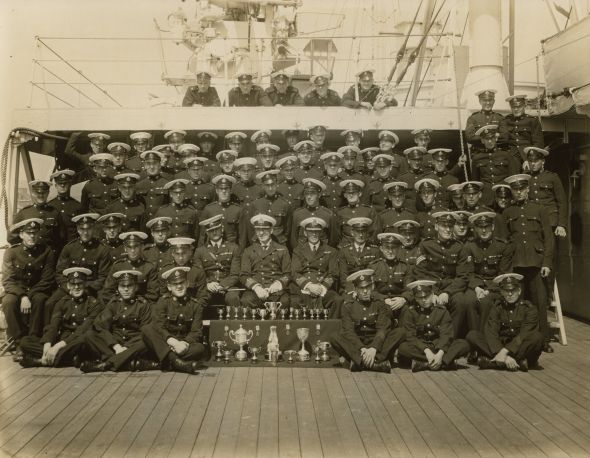
|
Royal Marine detachment HMS London 1930 with sporting trophies. |
This web page: http://www.horncombe.net/hms_london/HMS_London.html